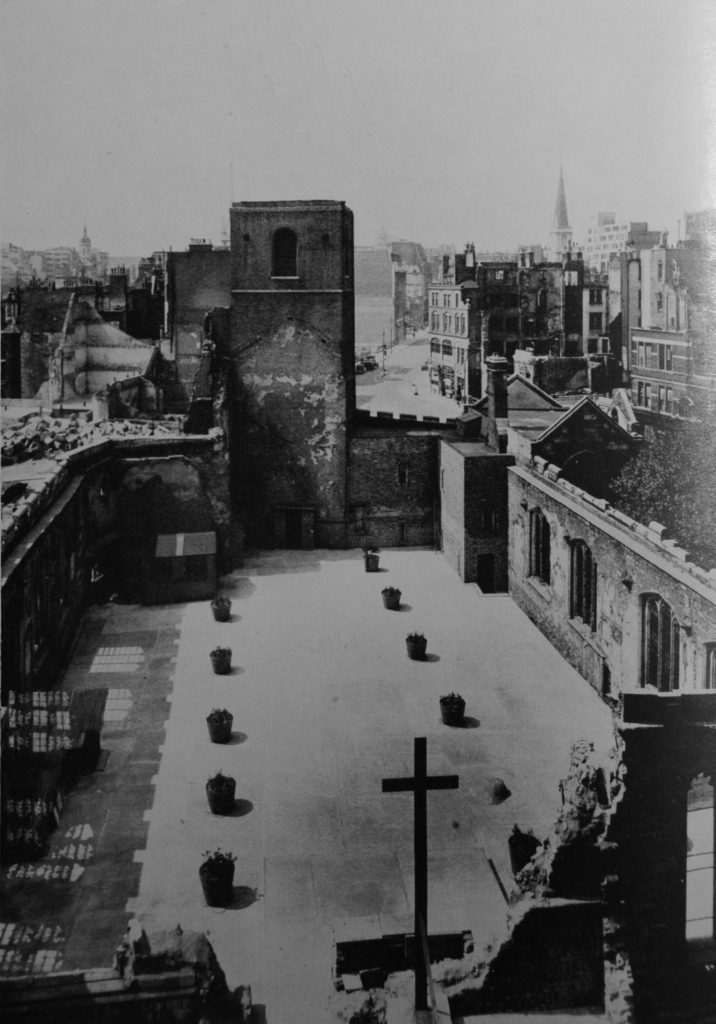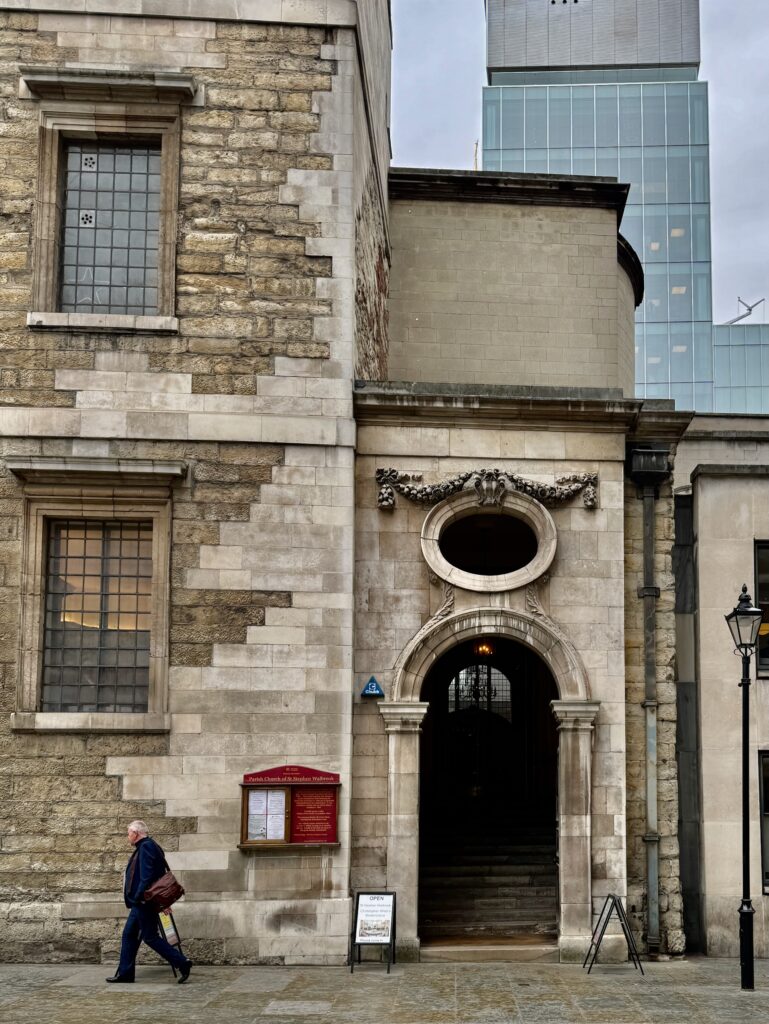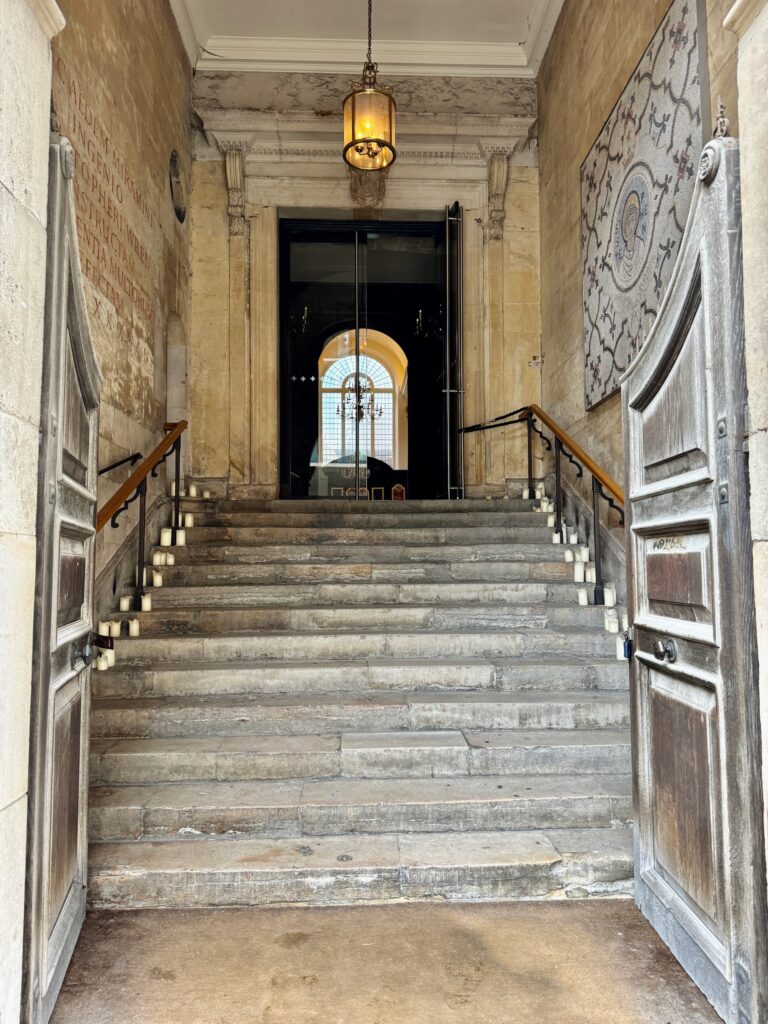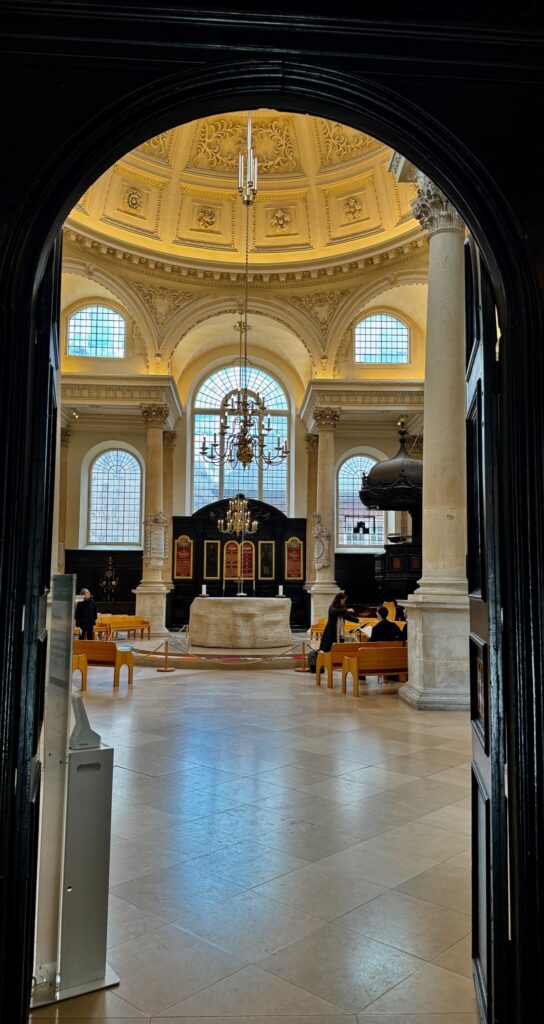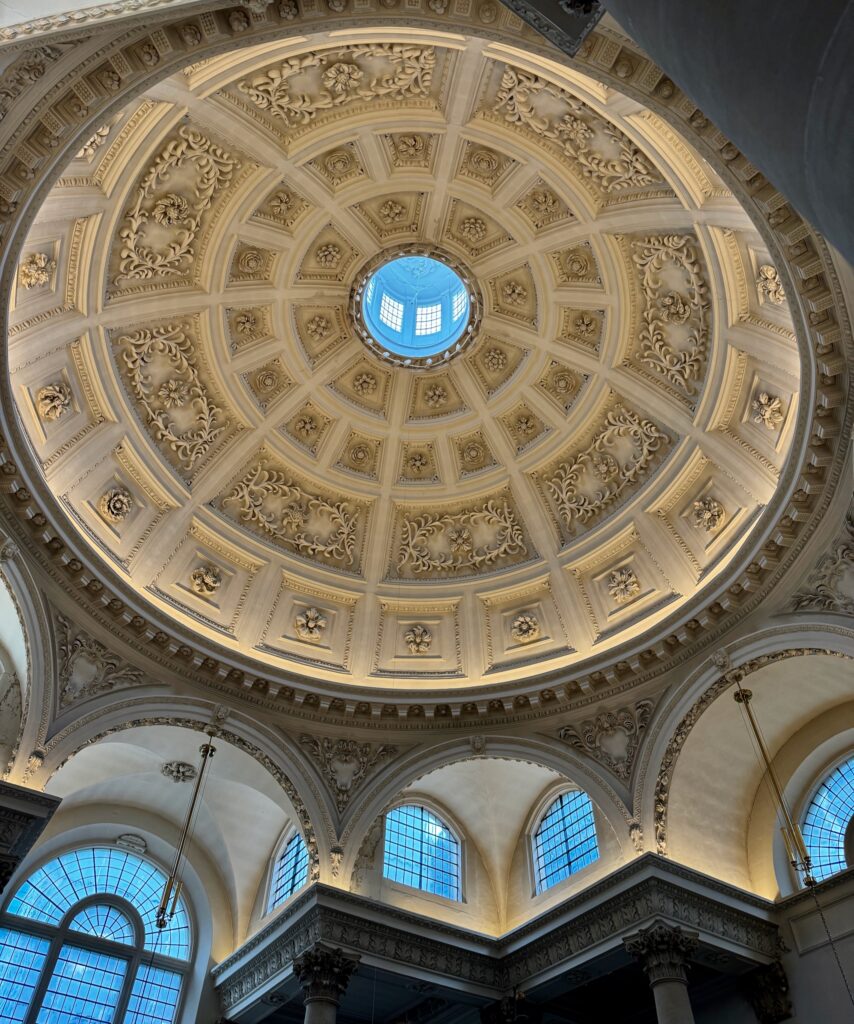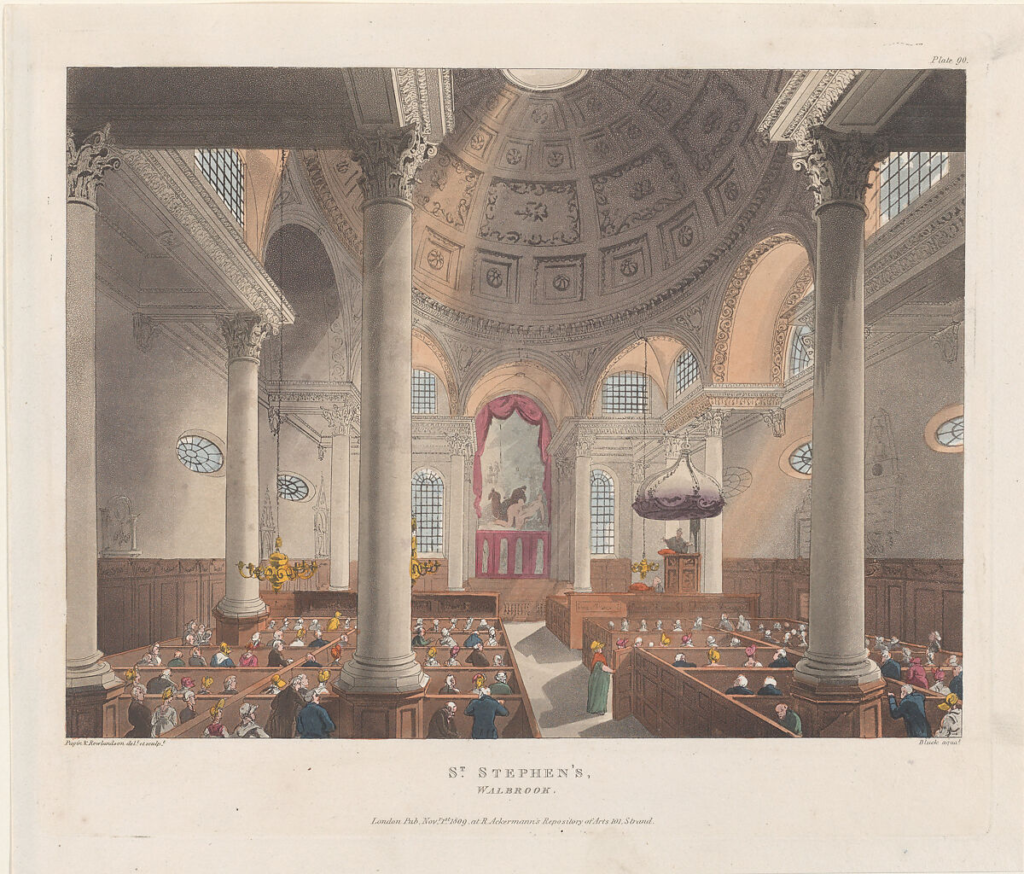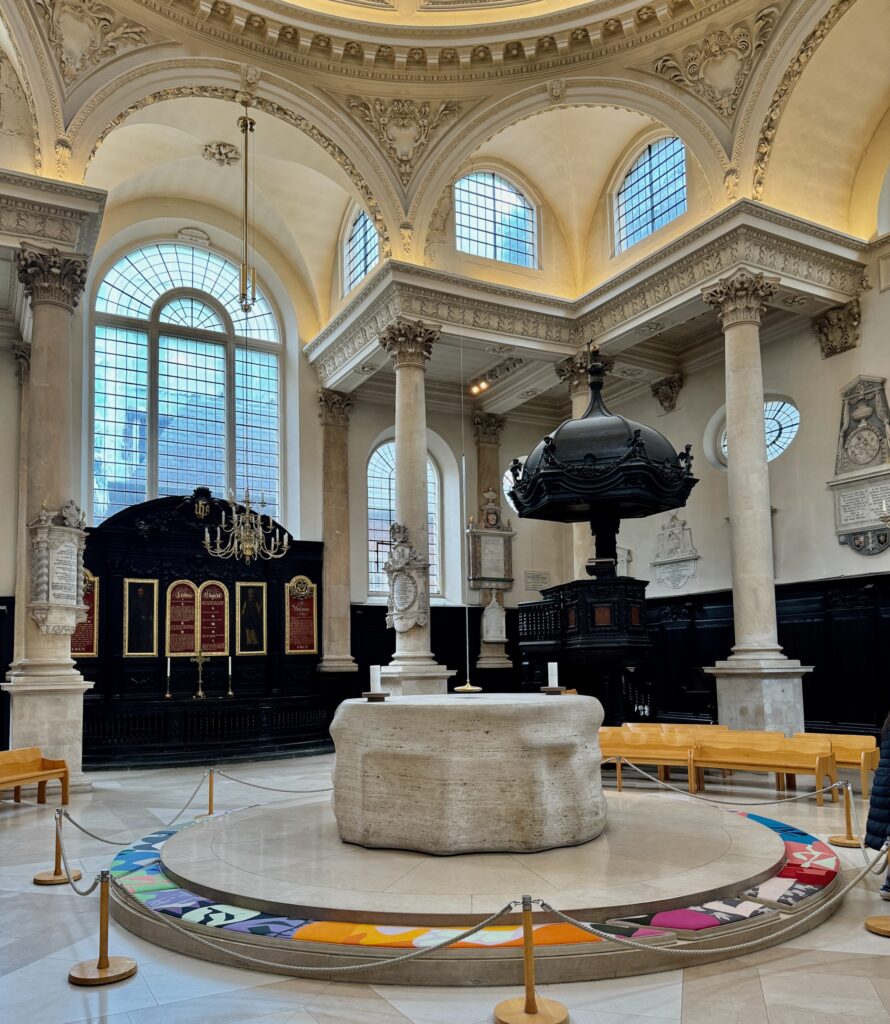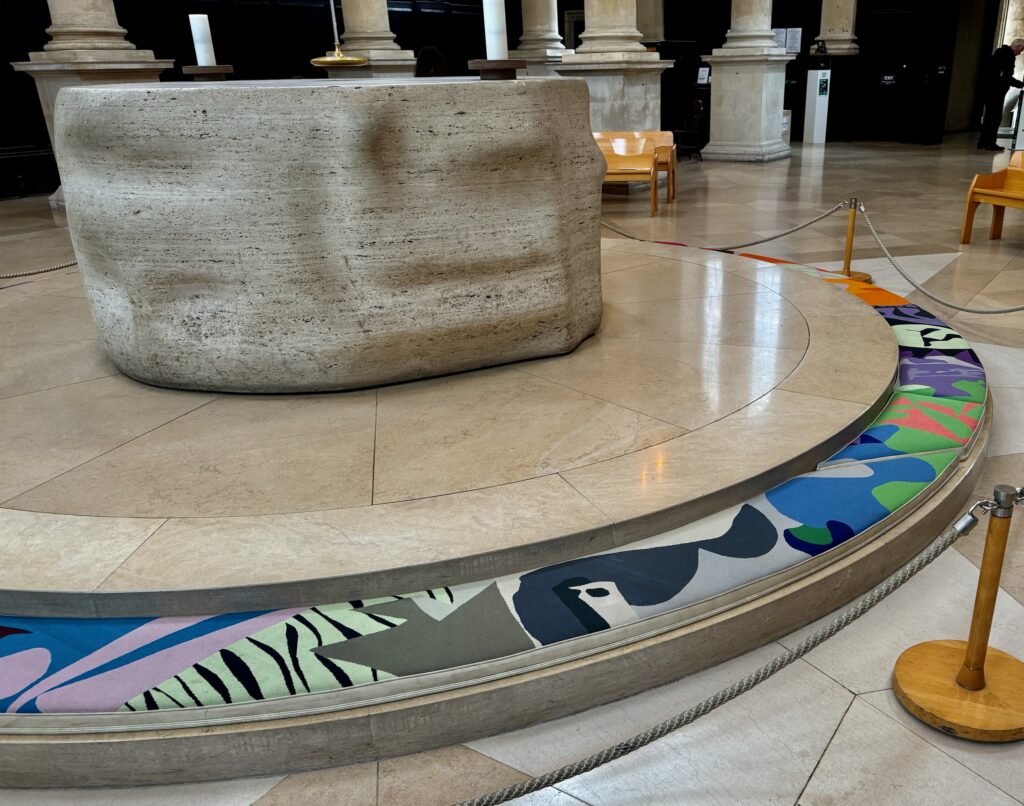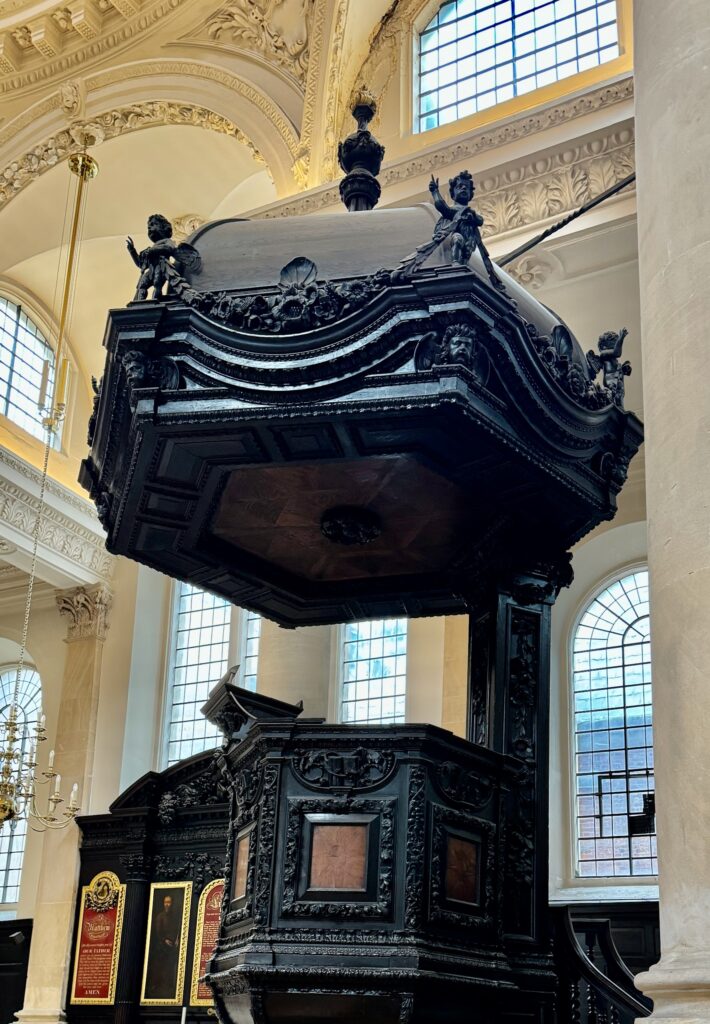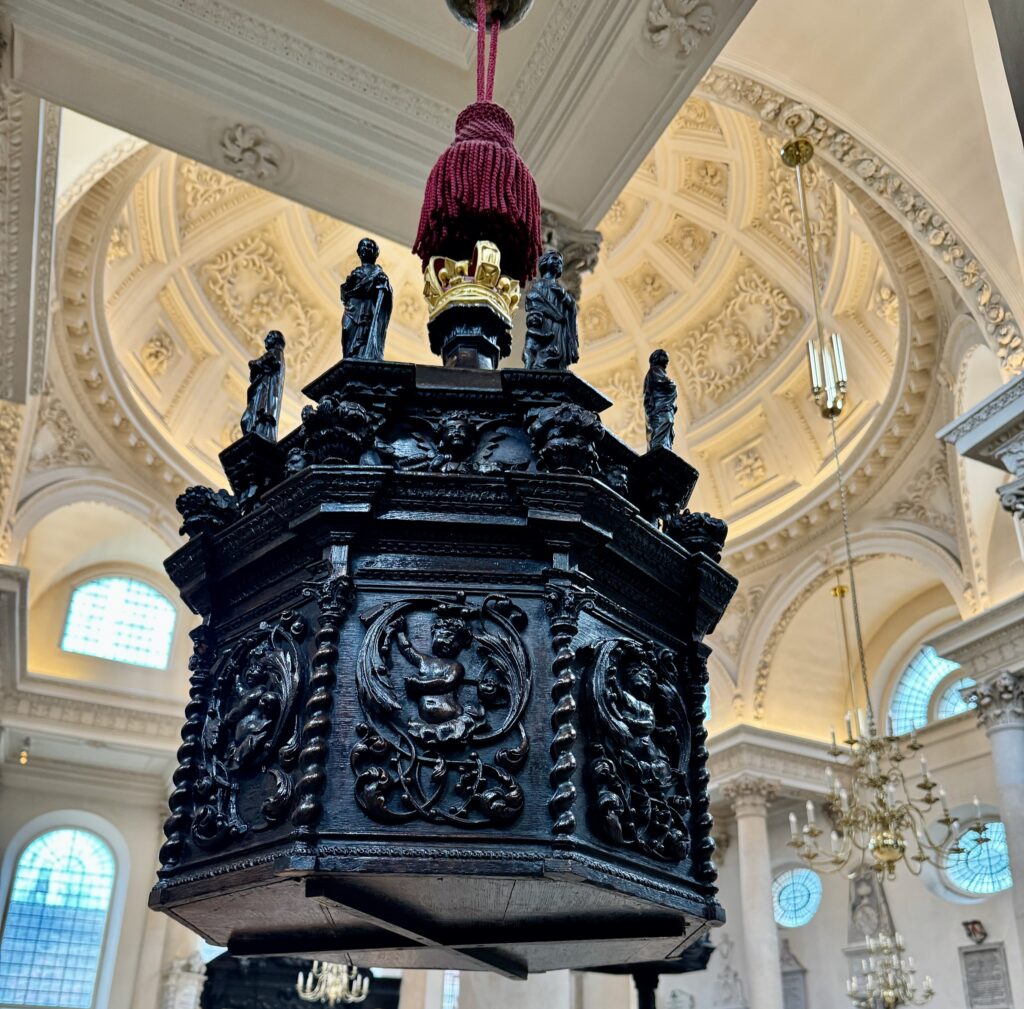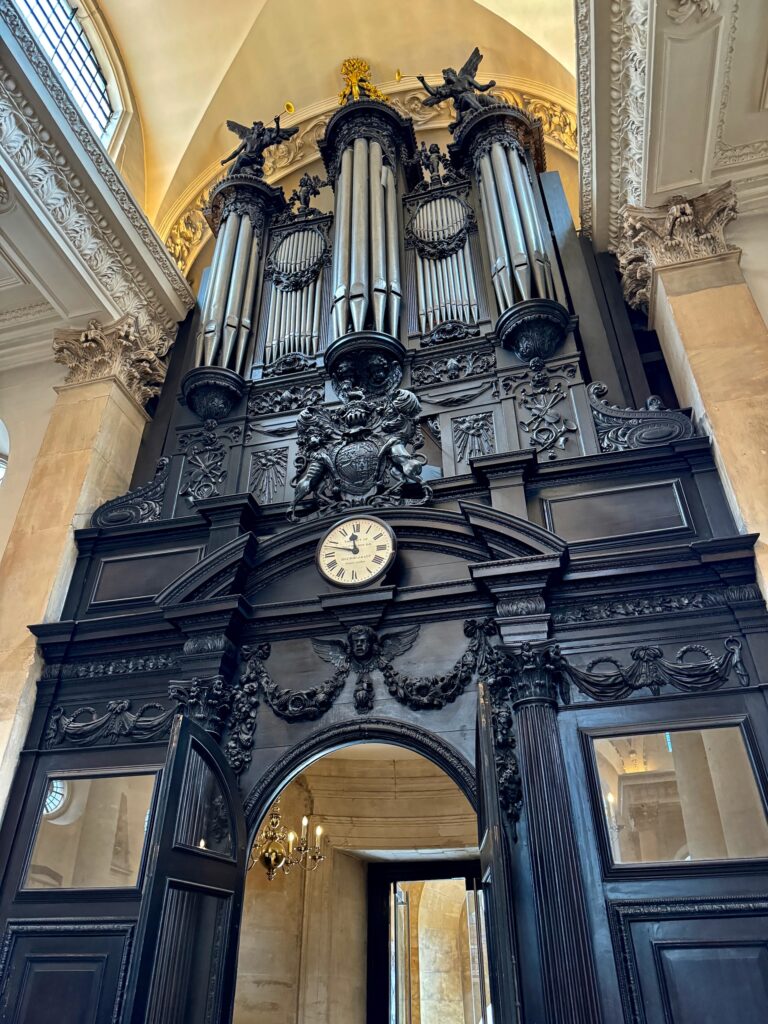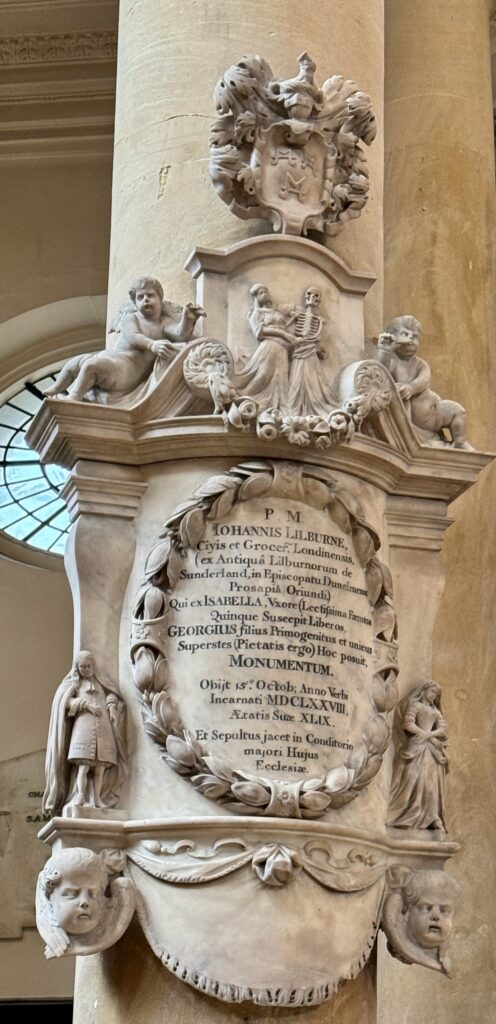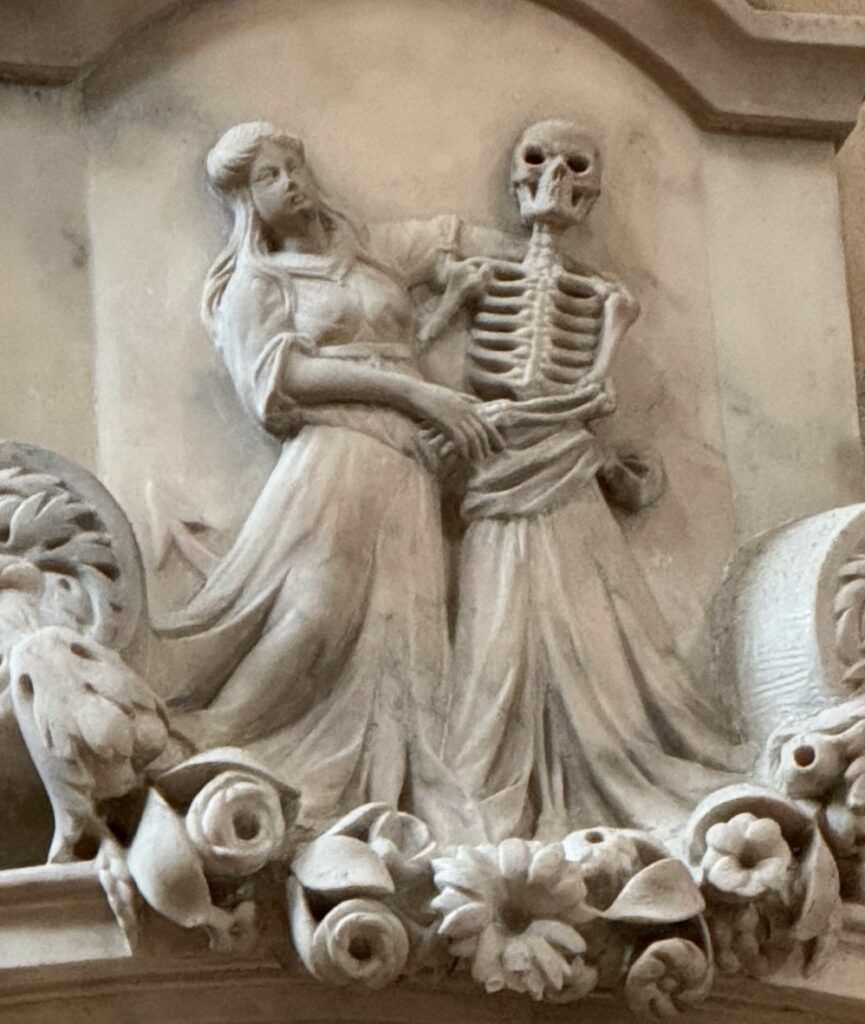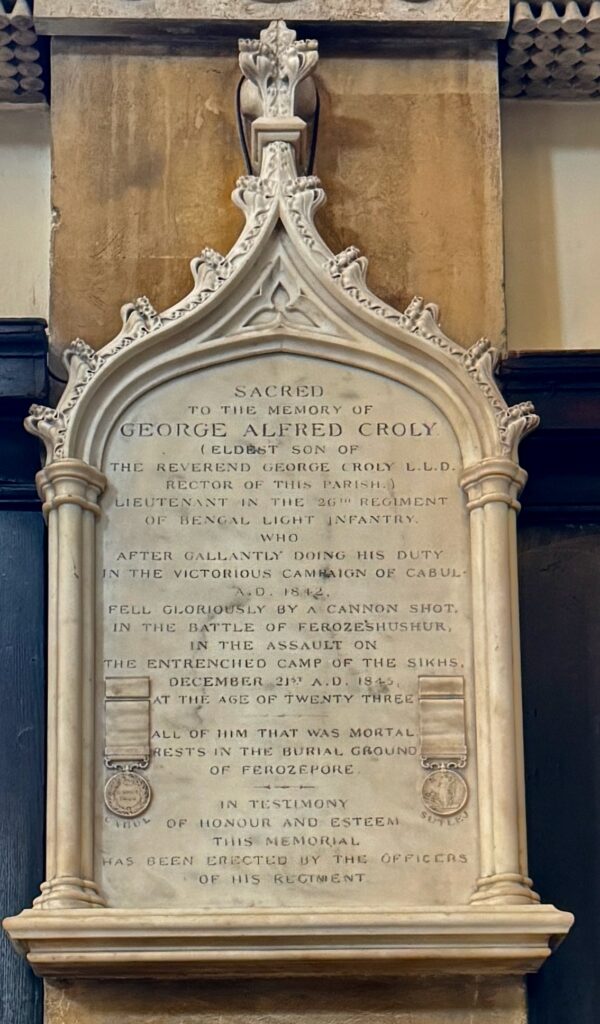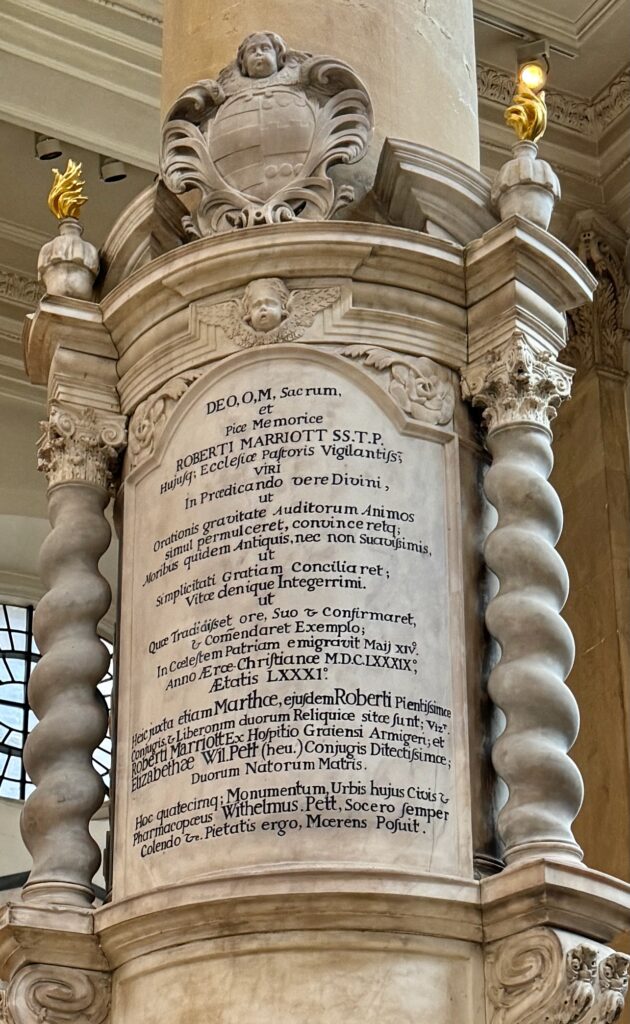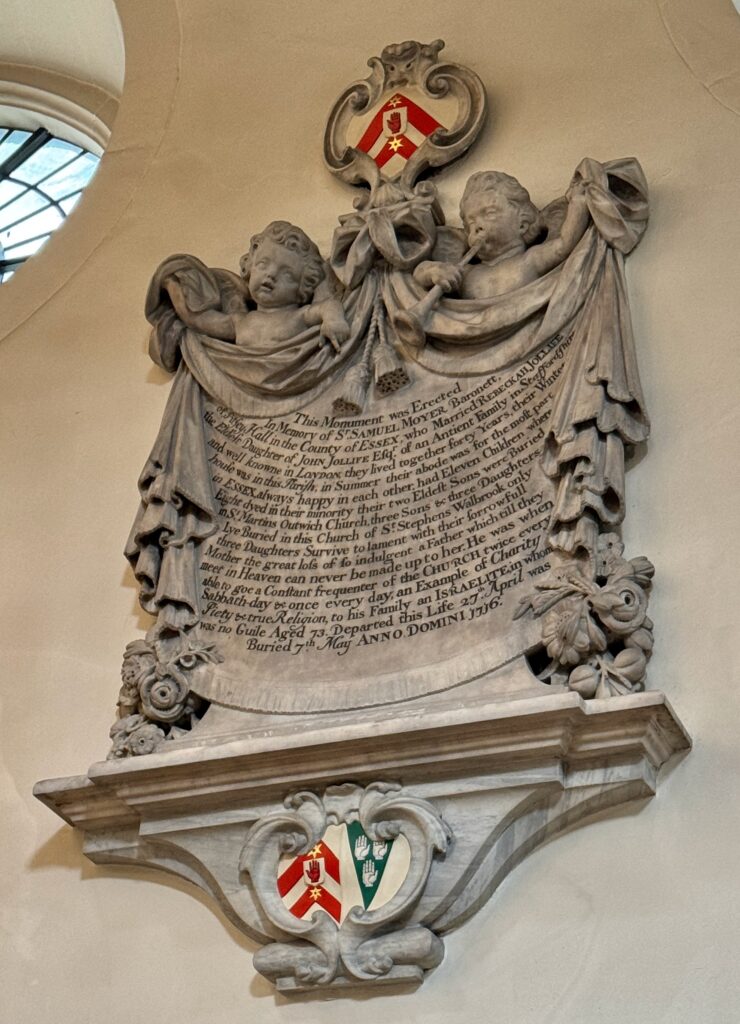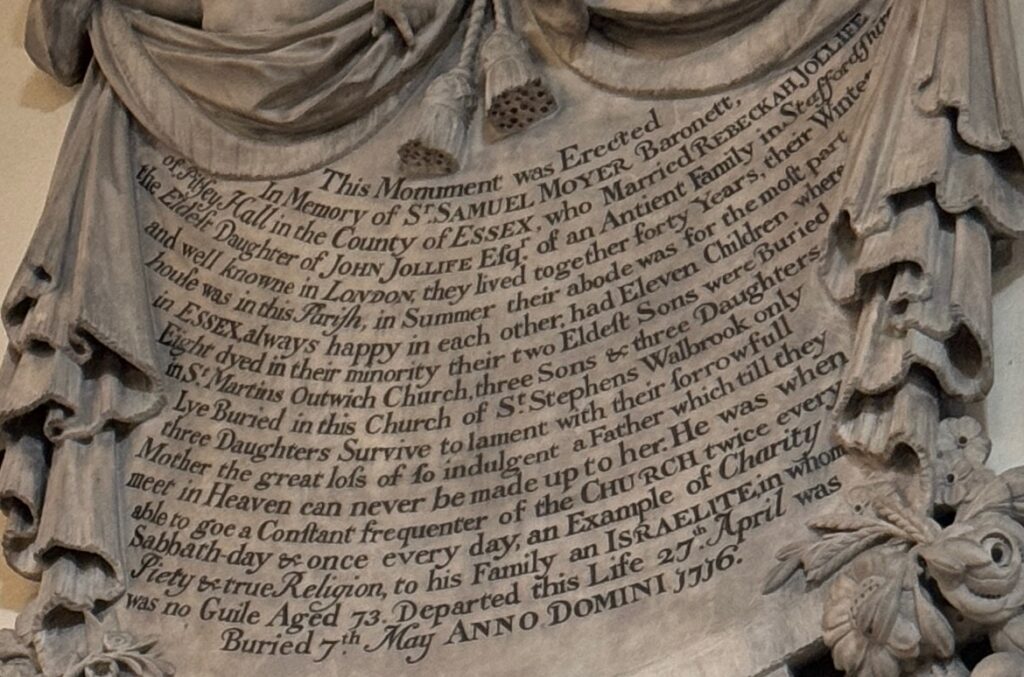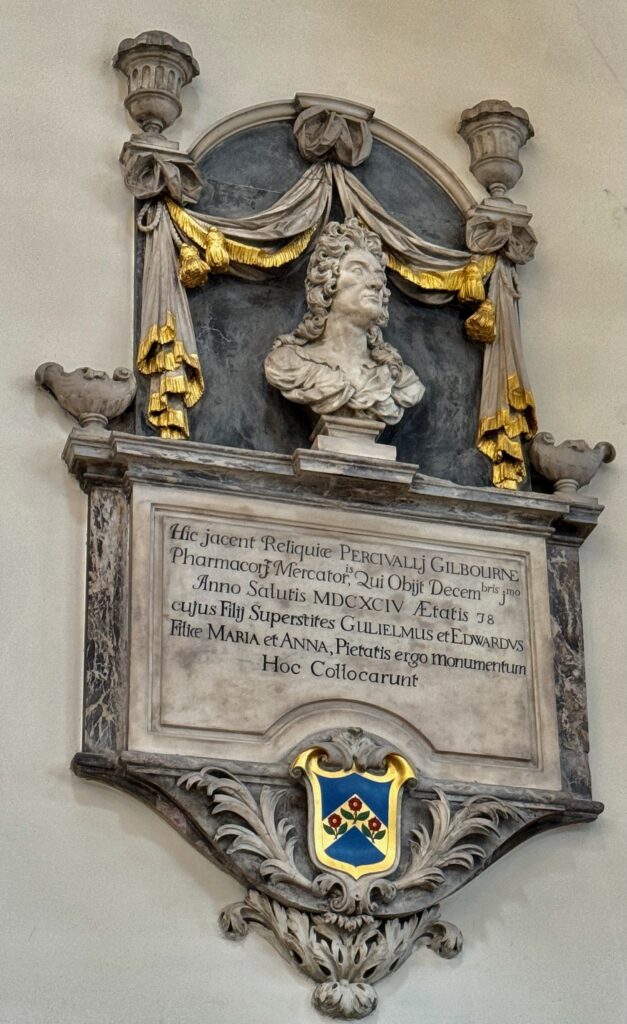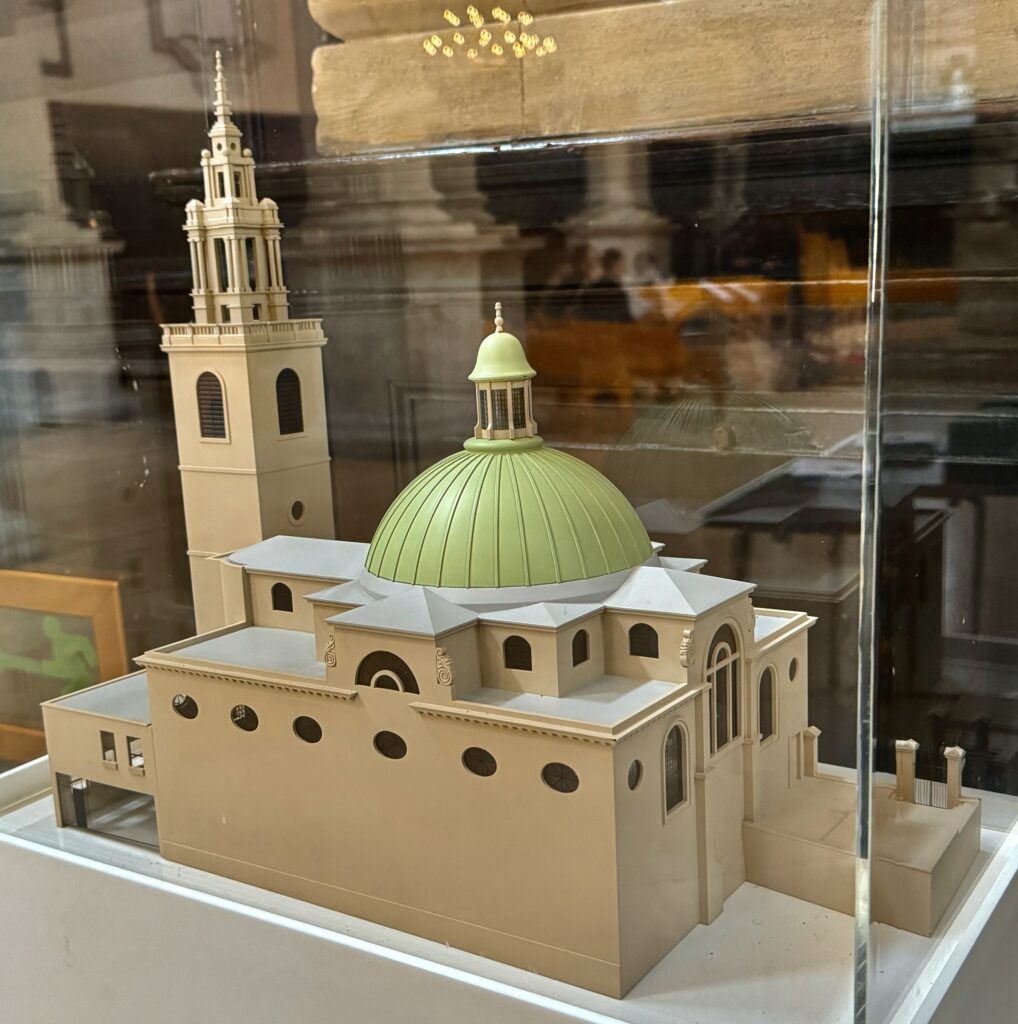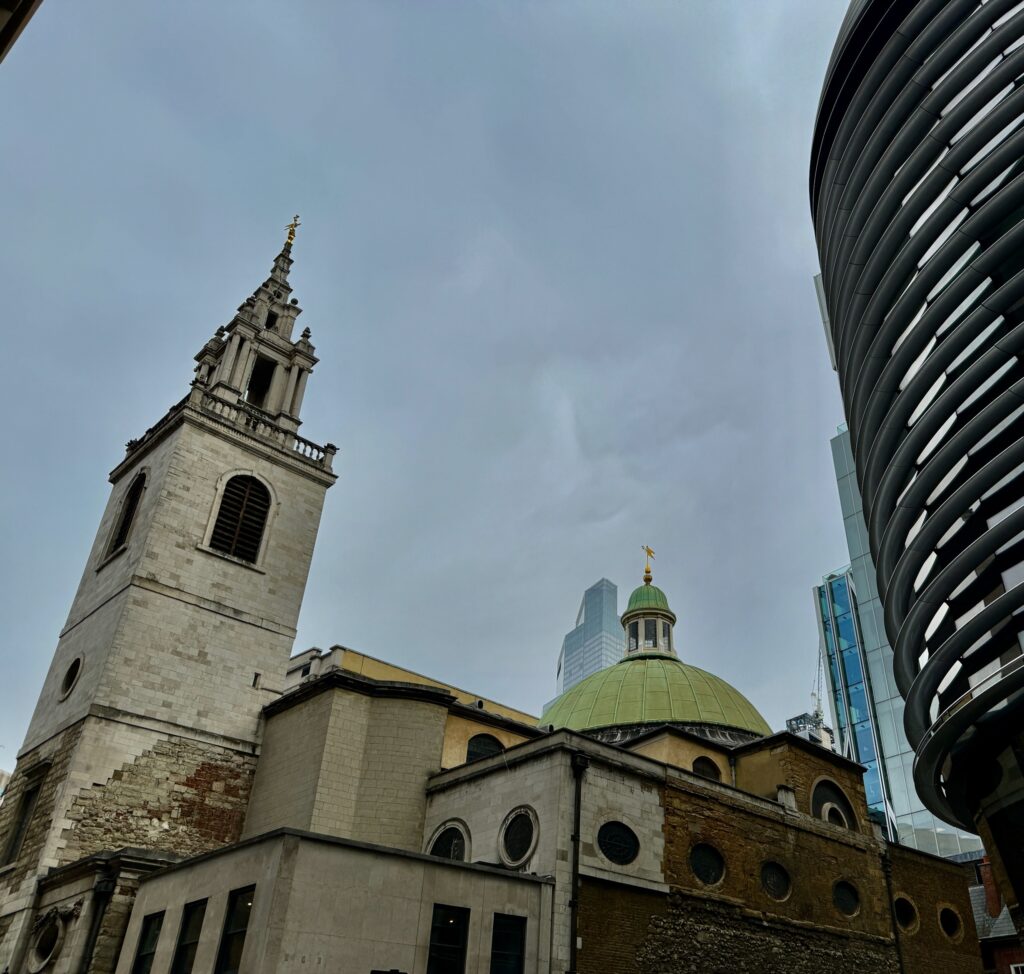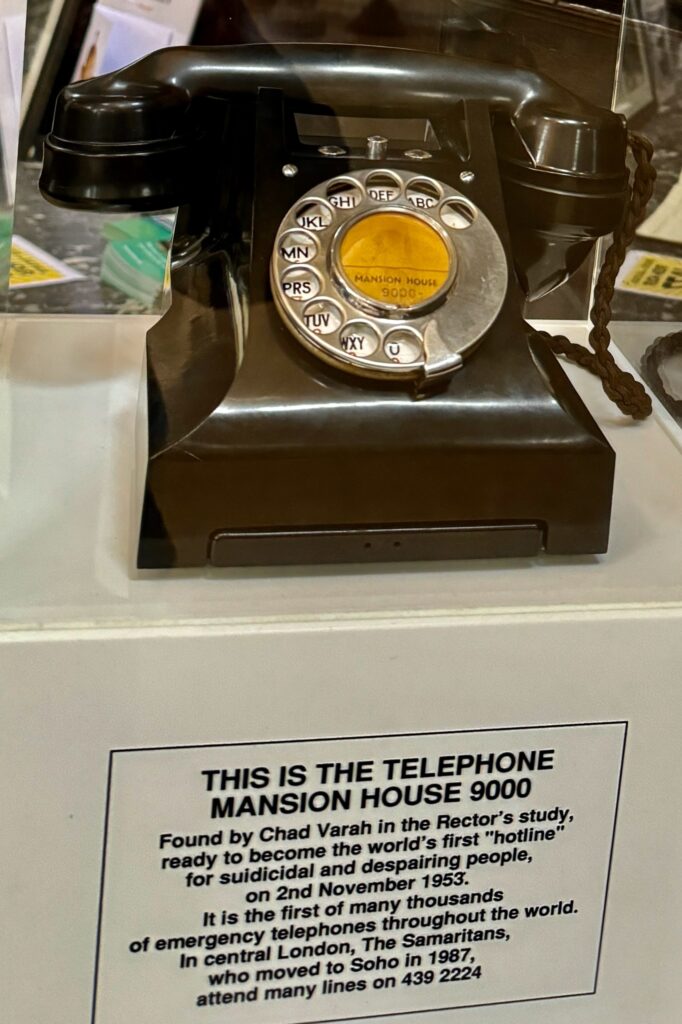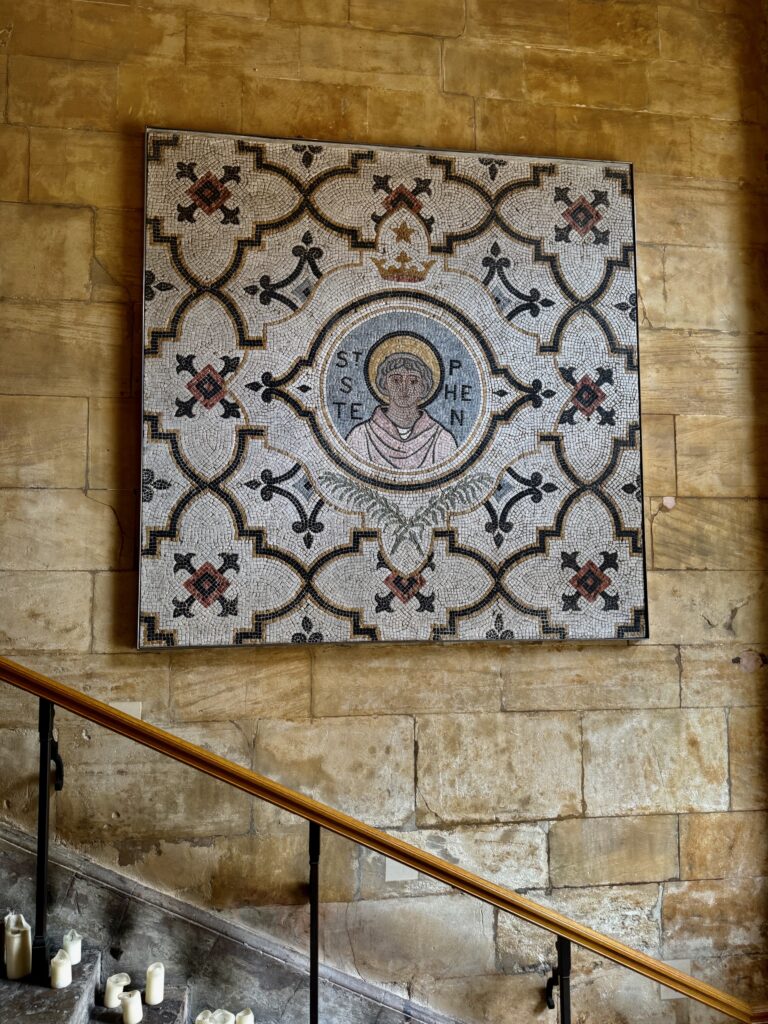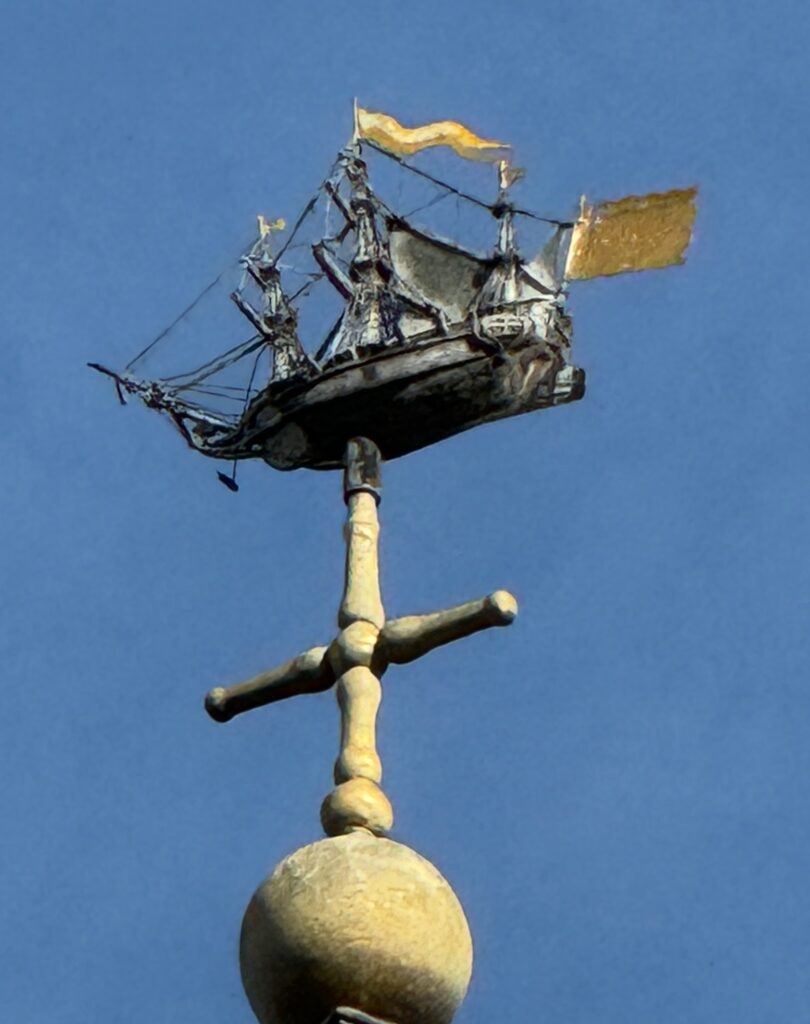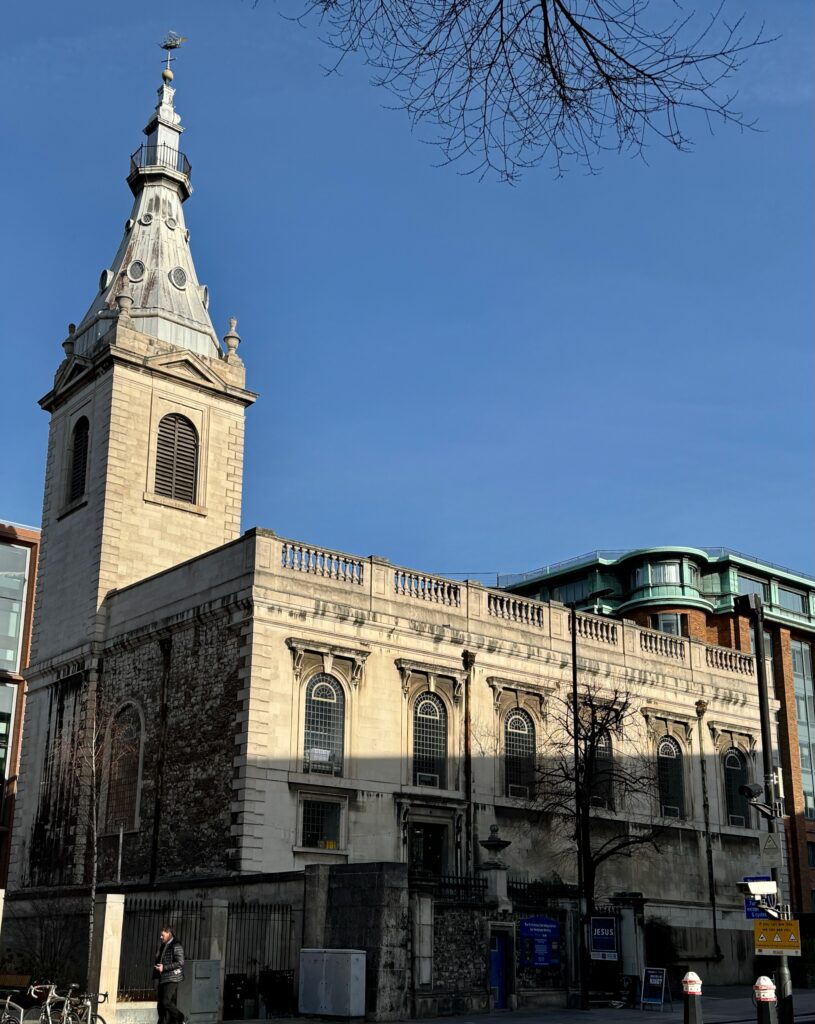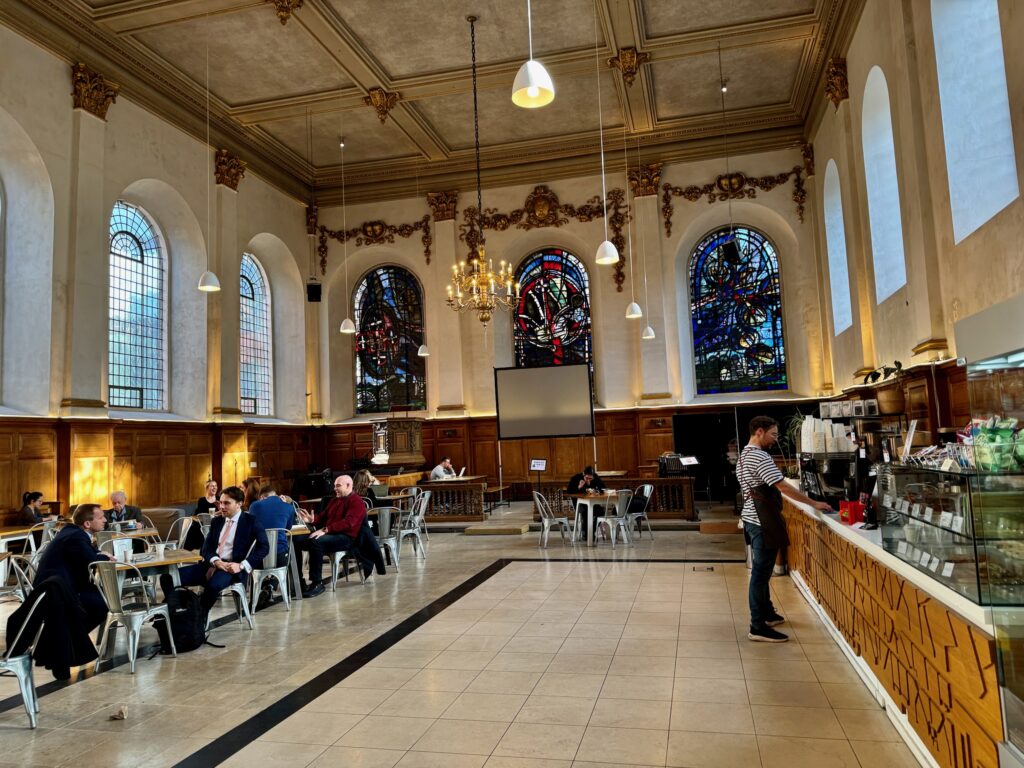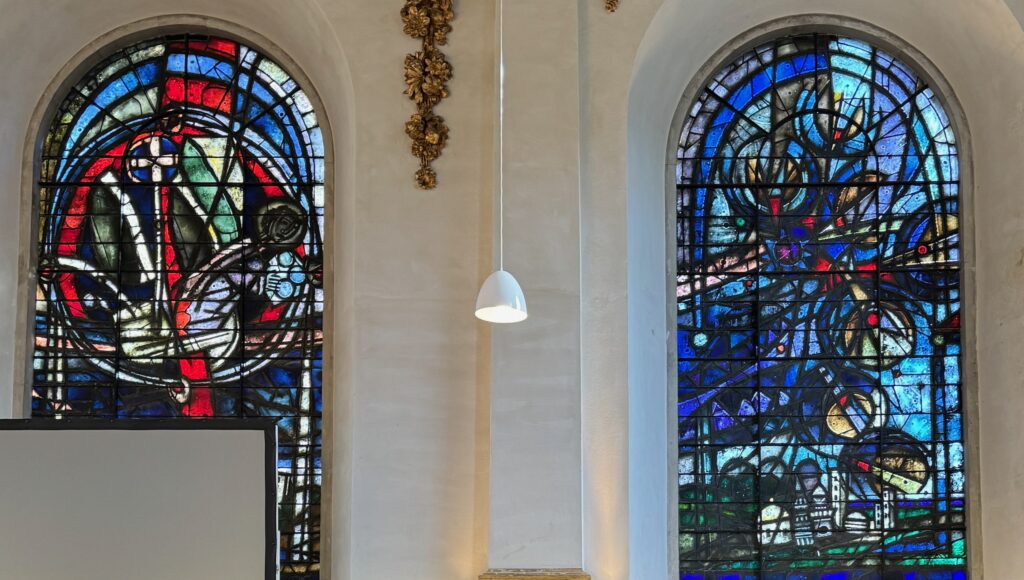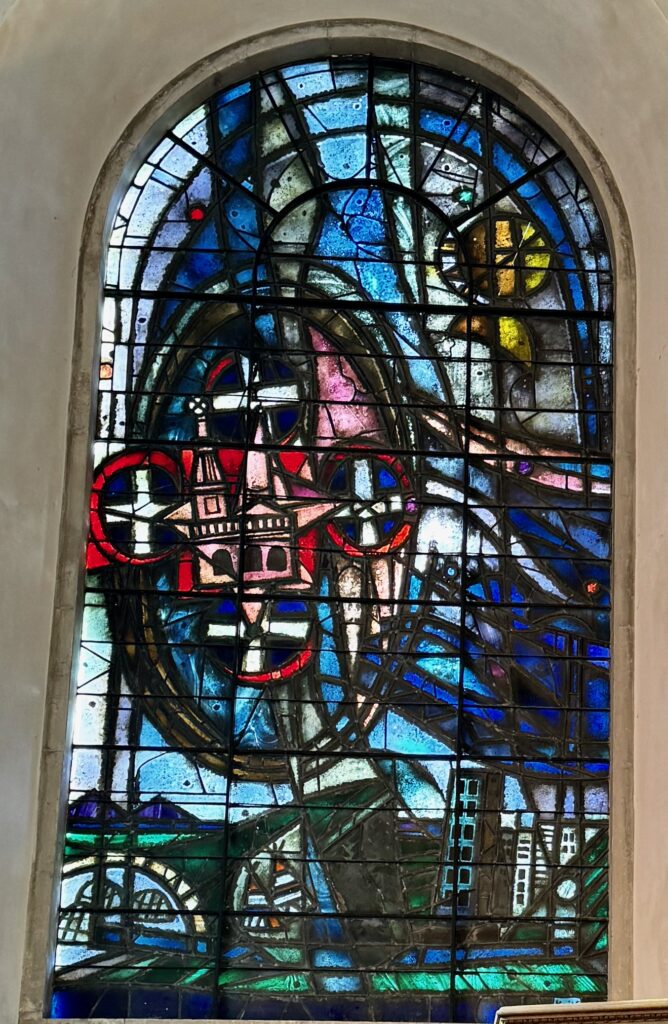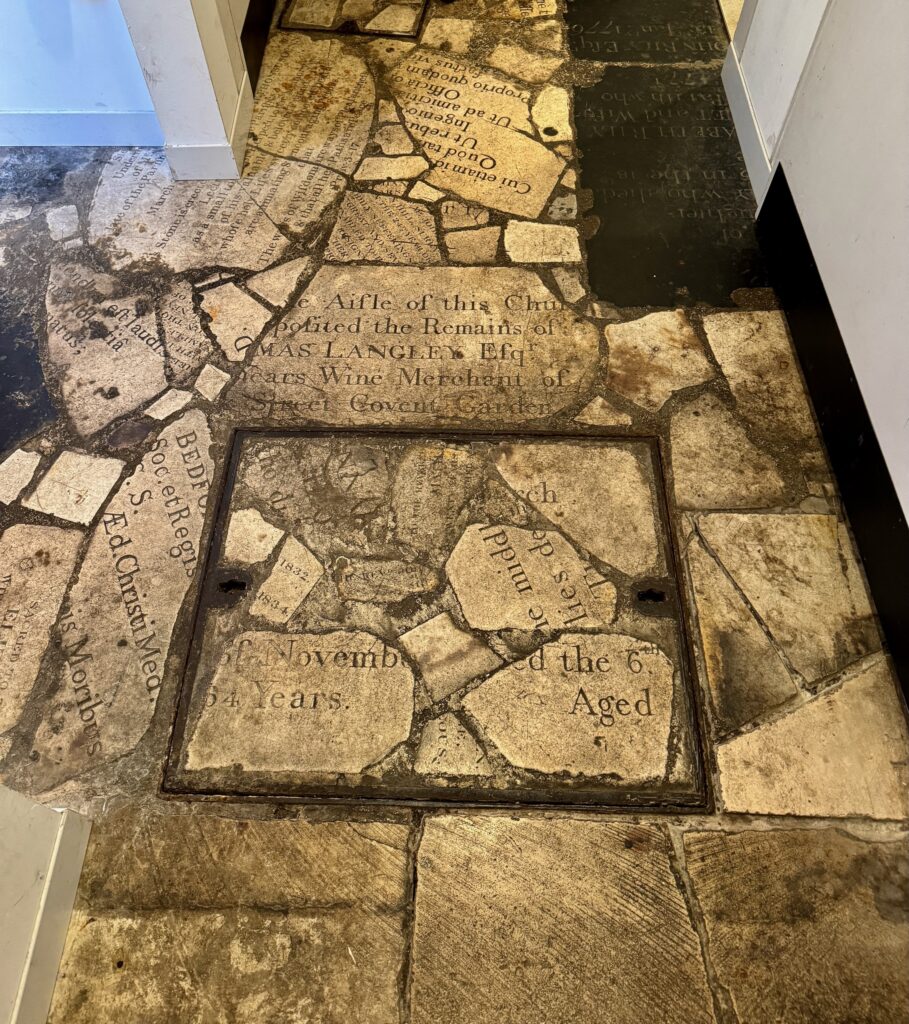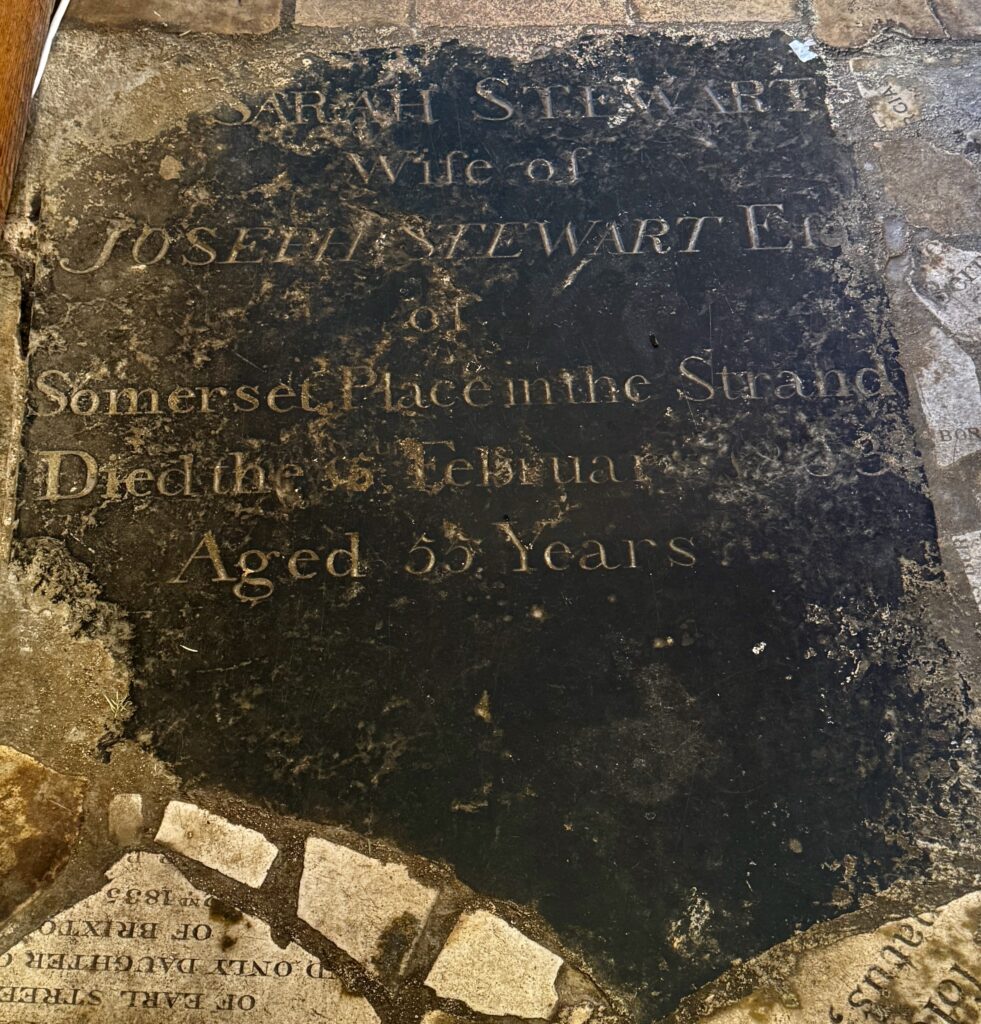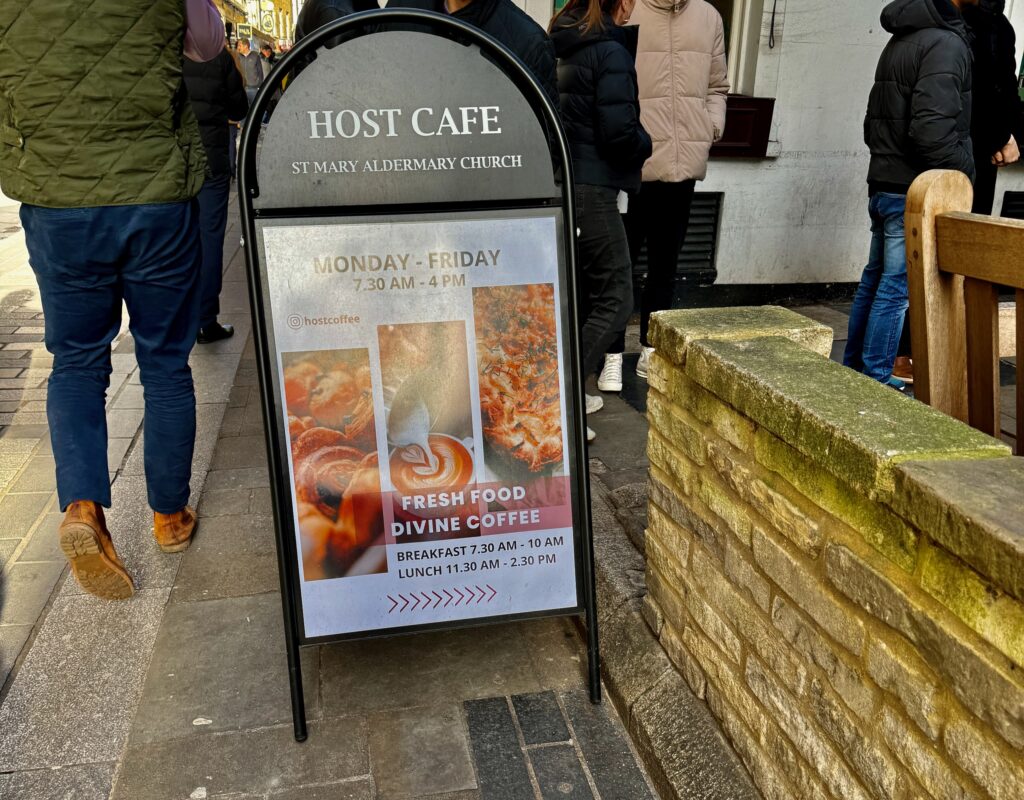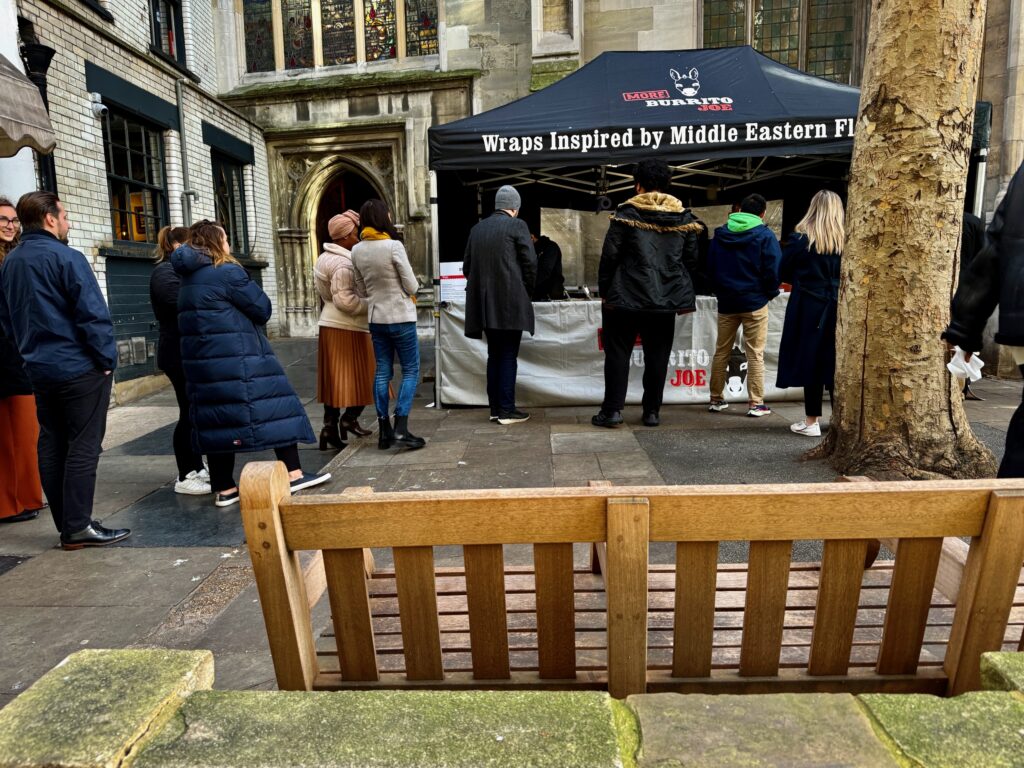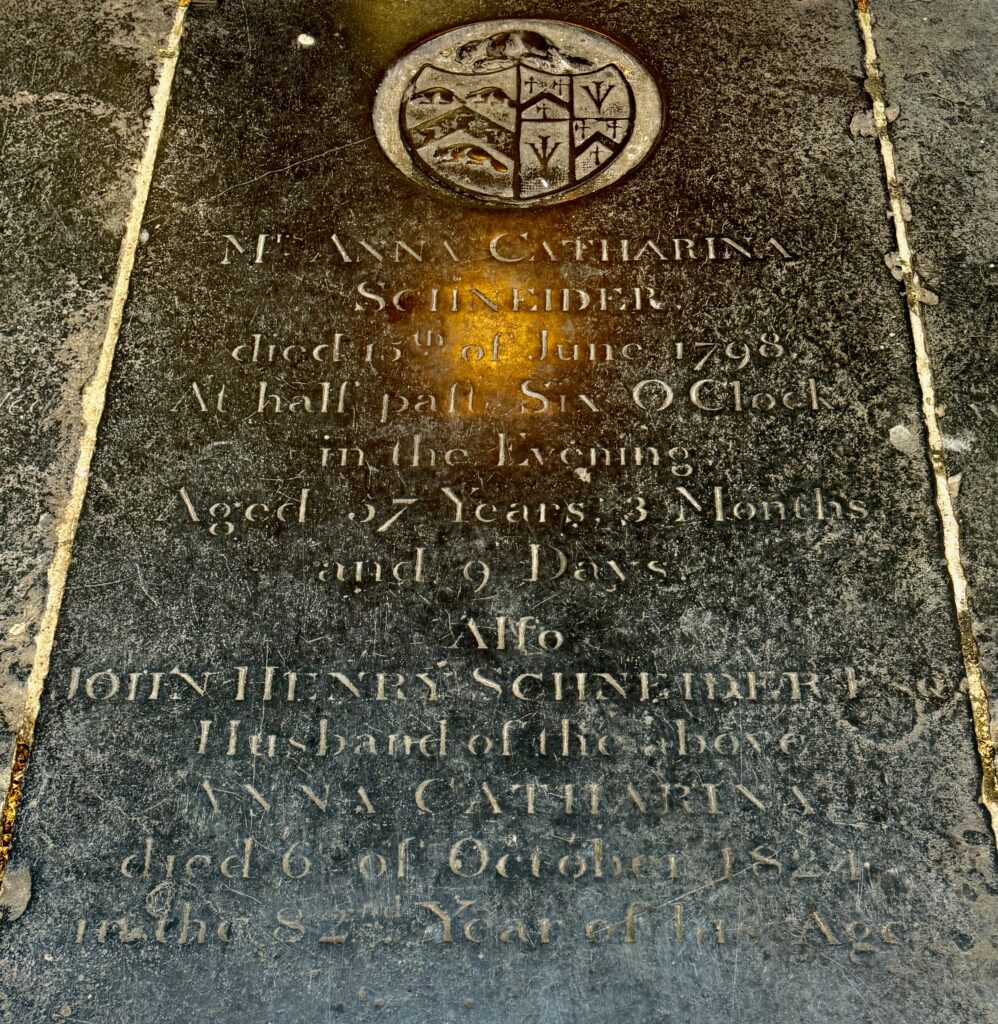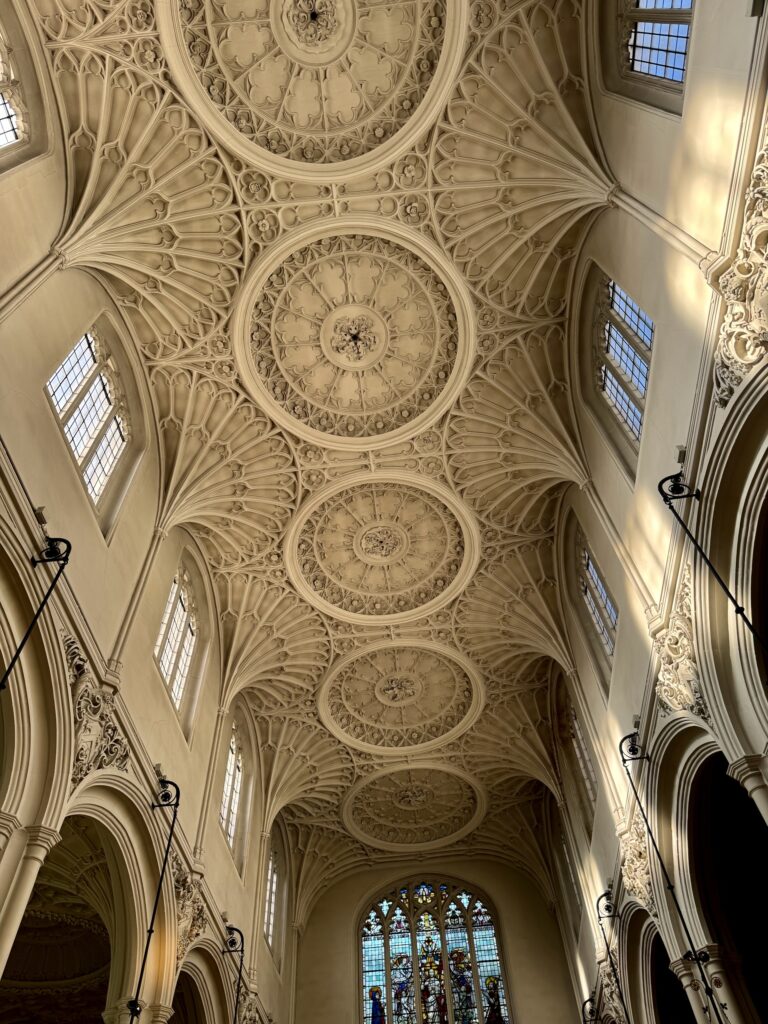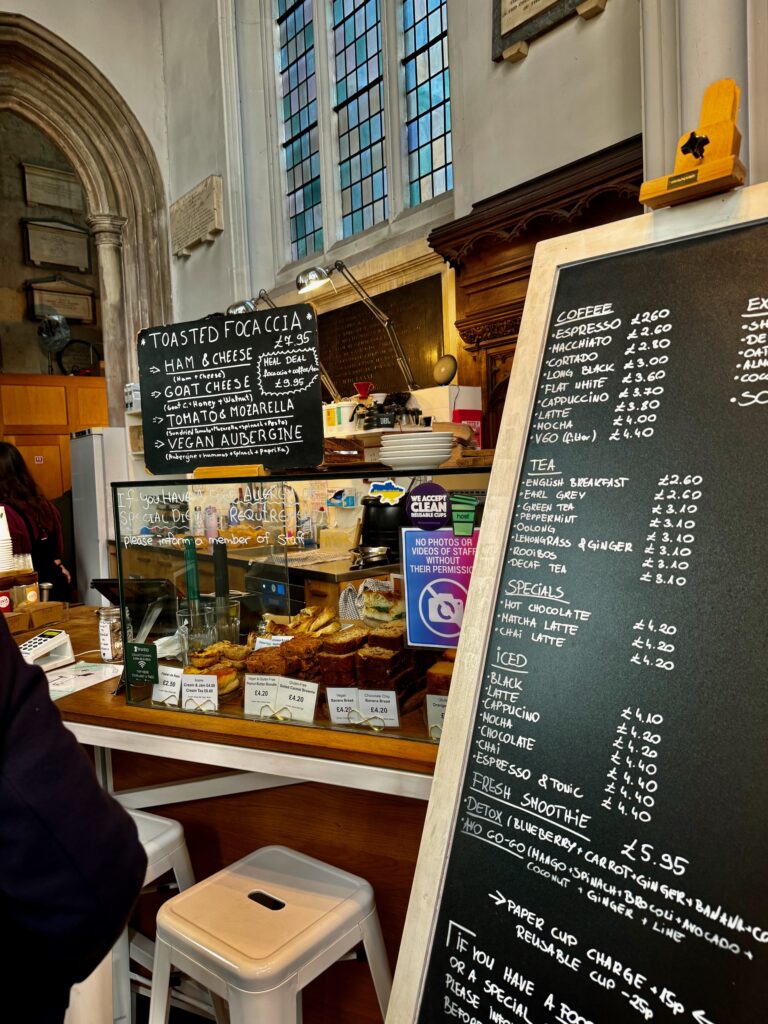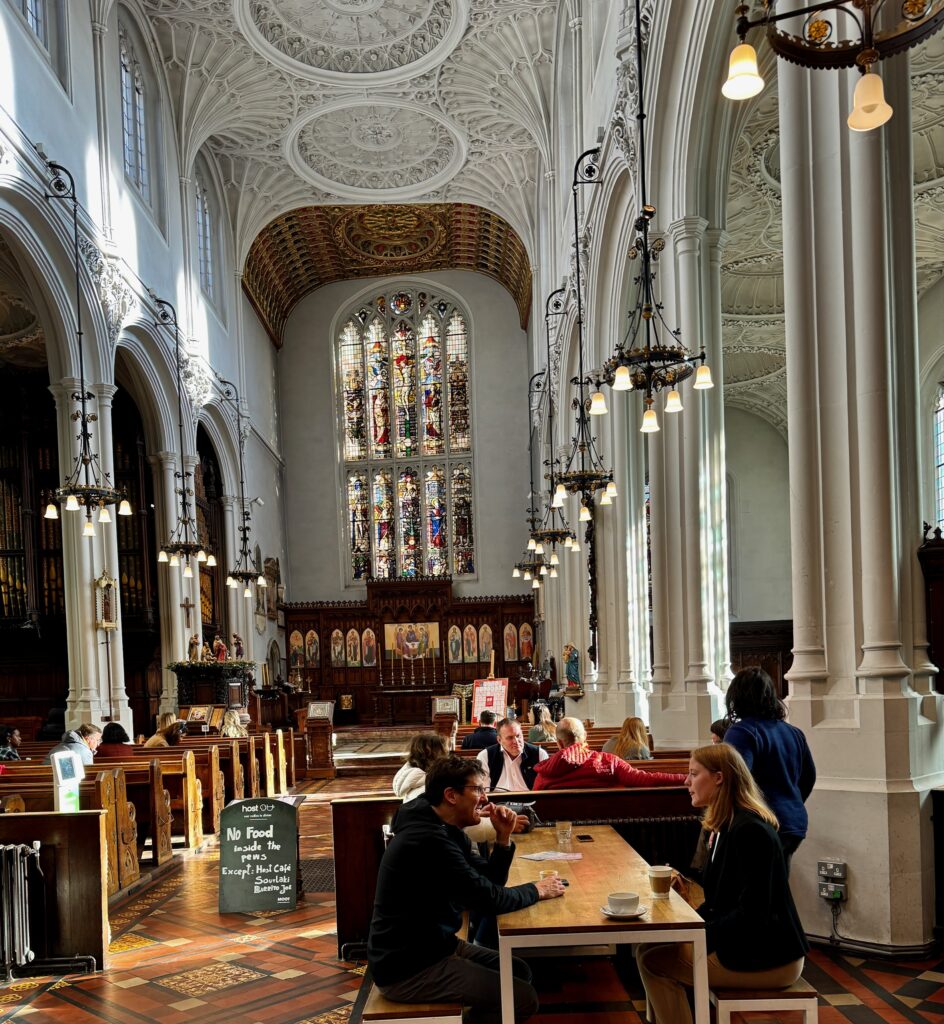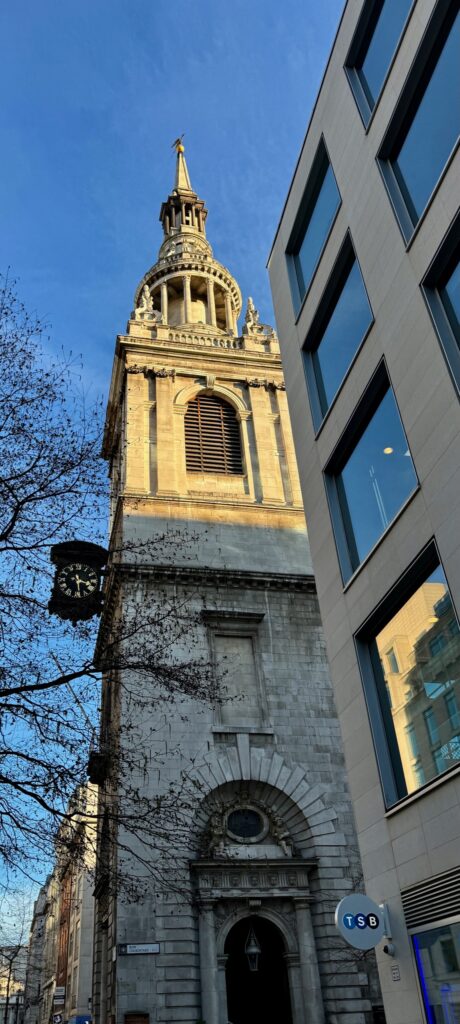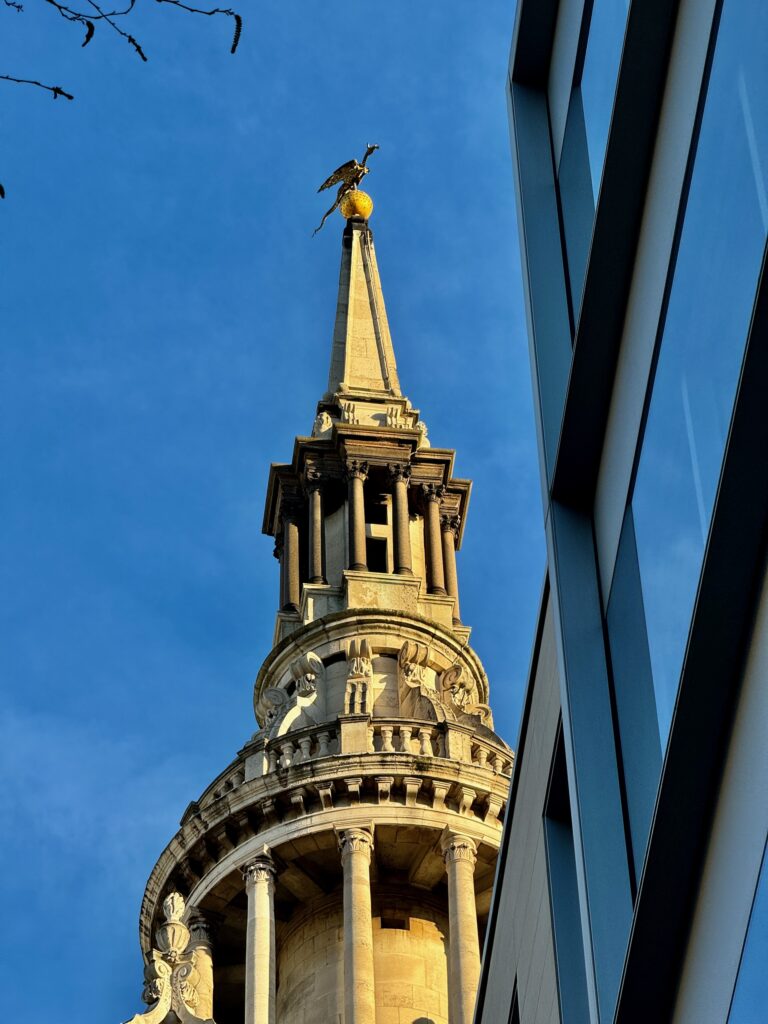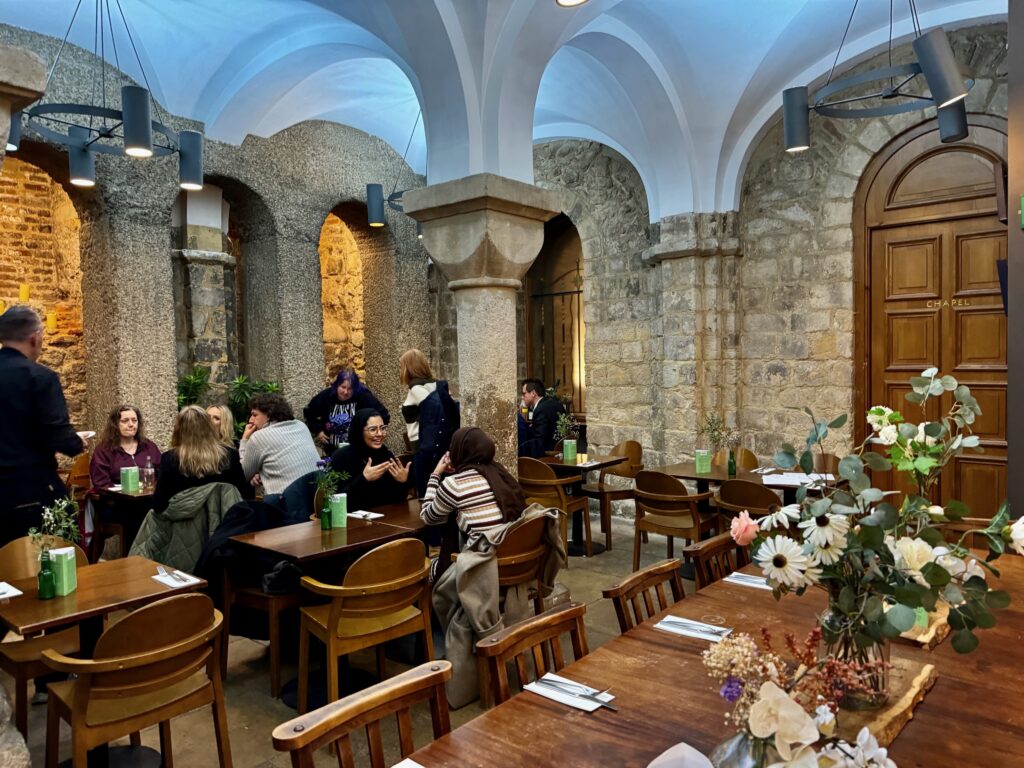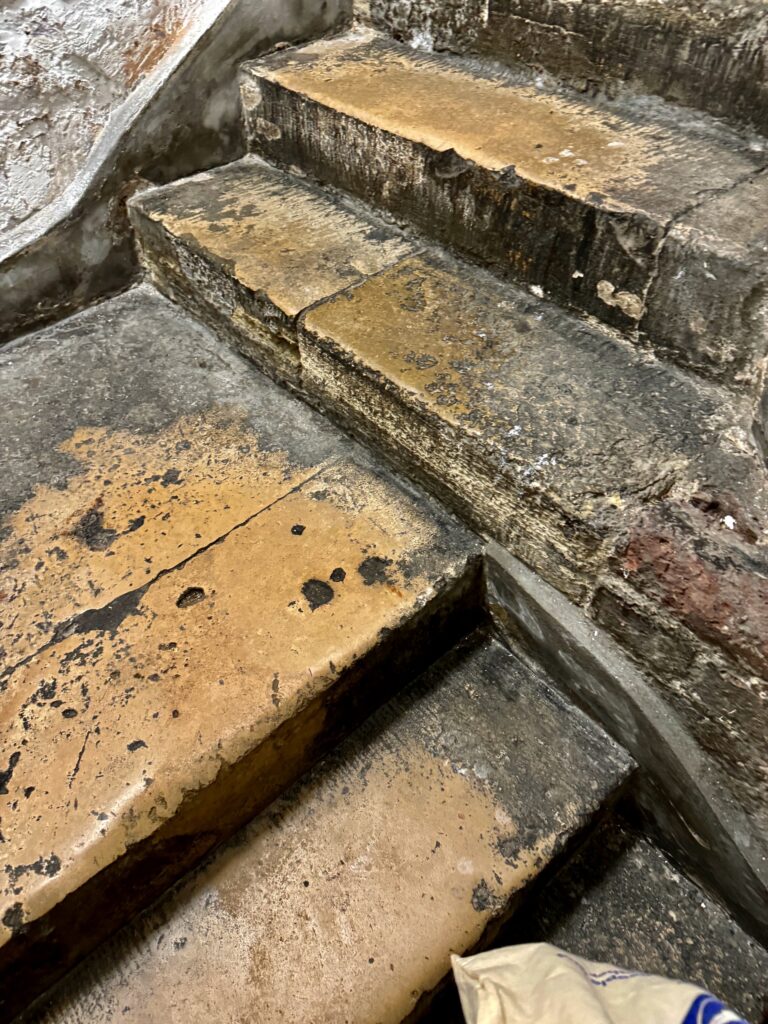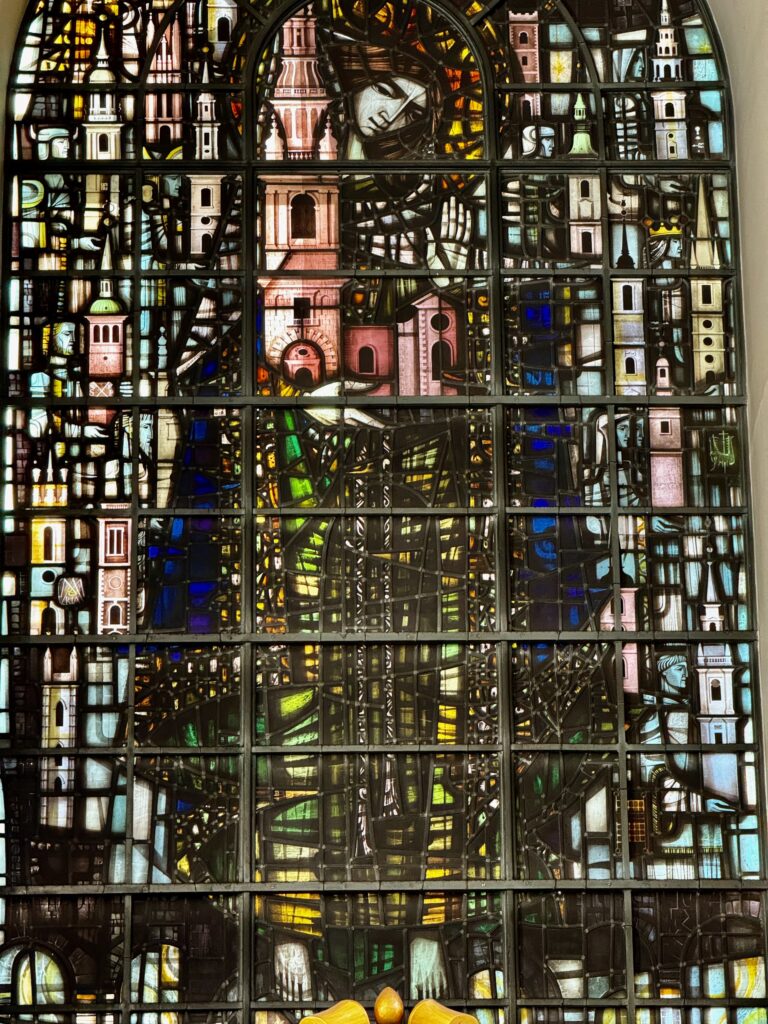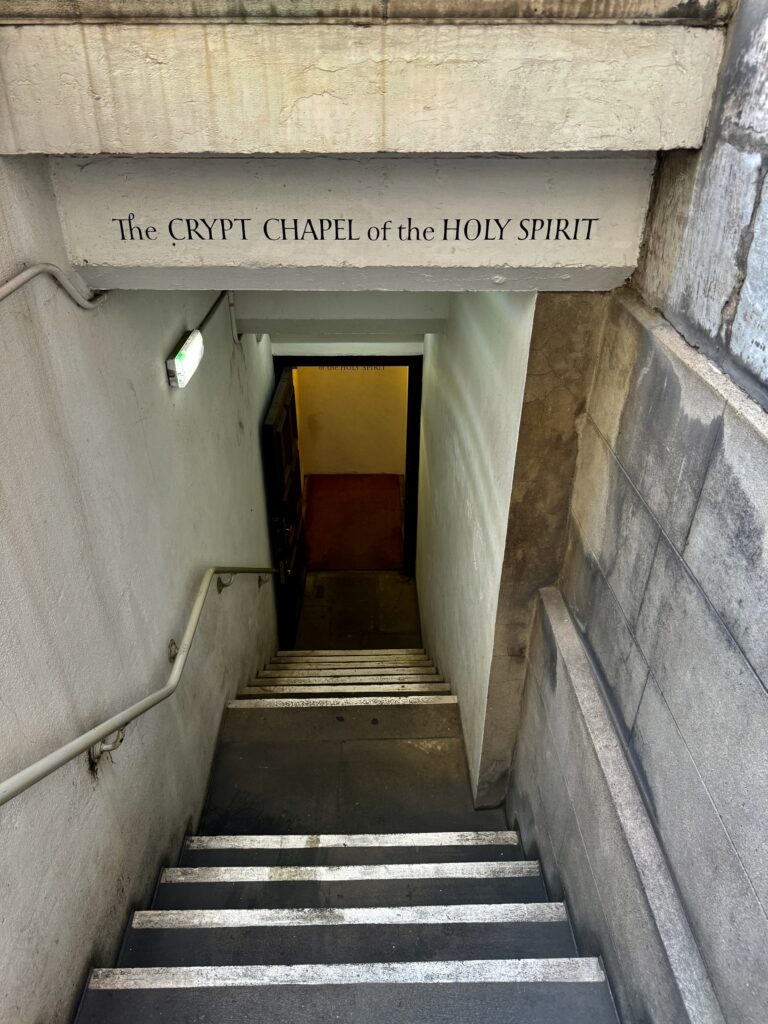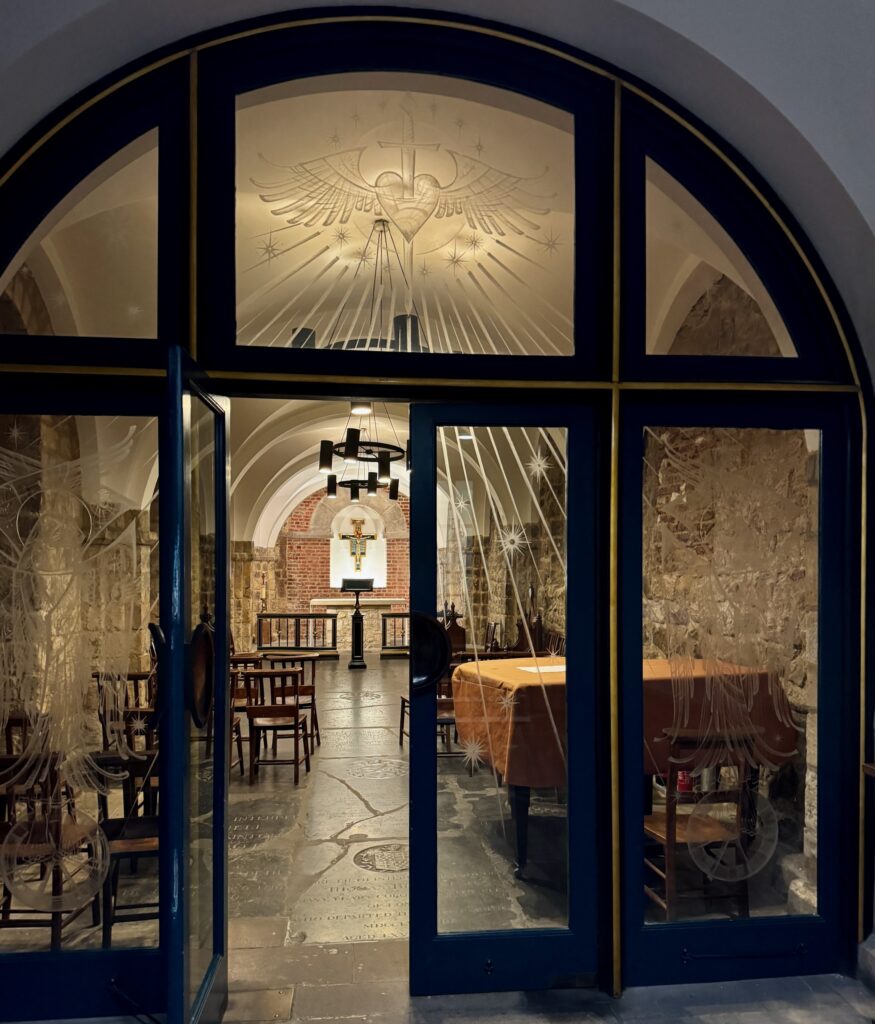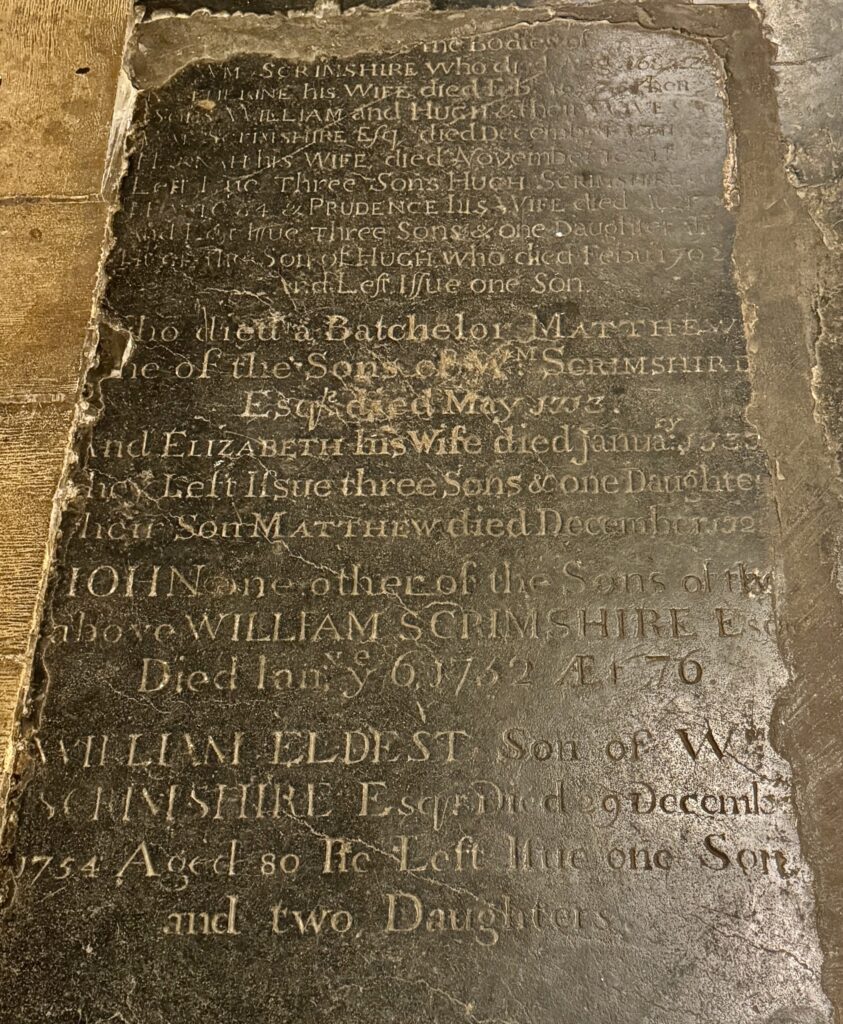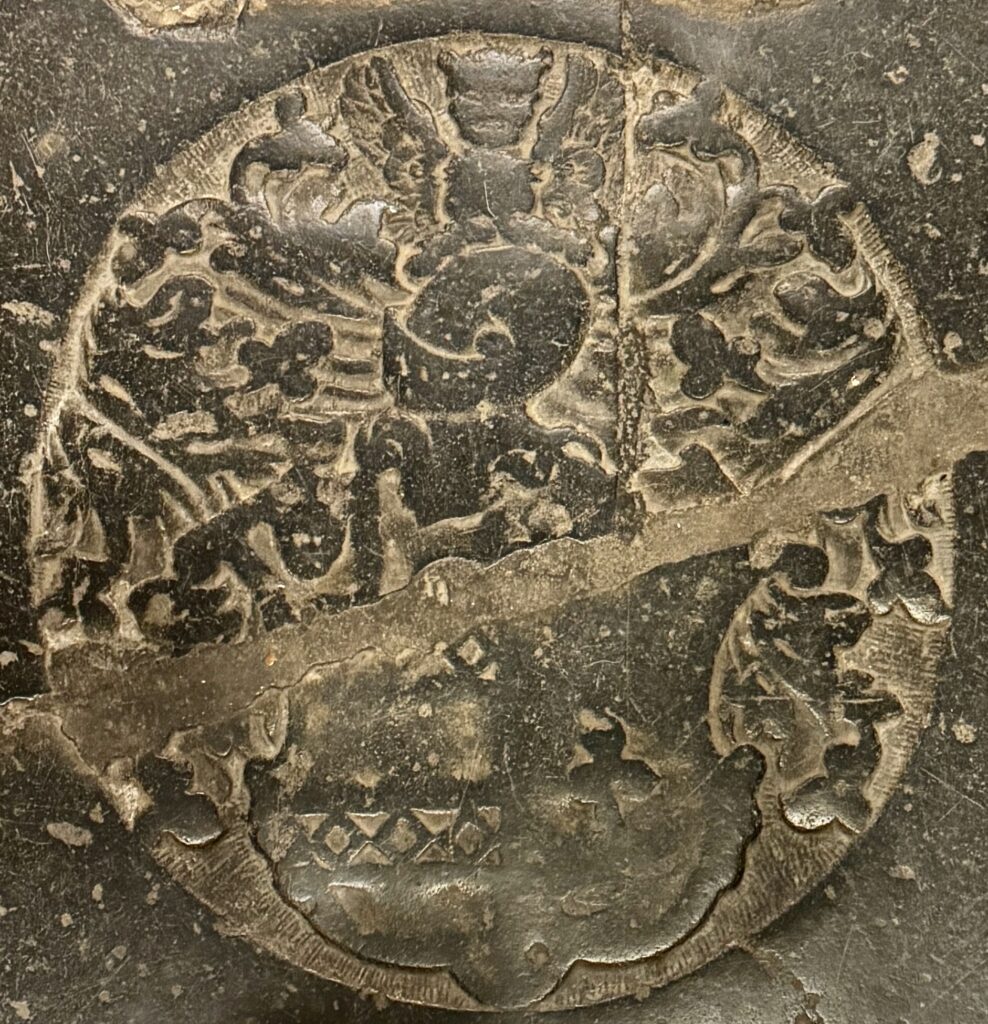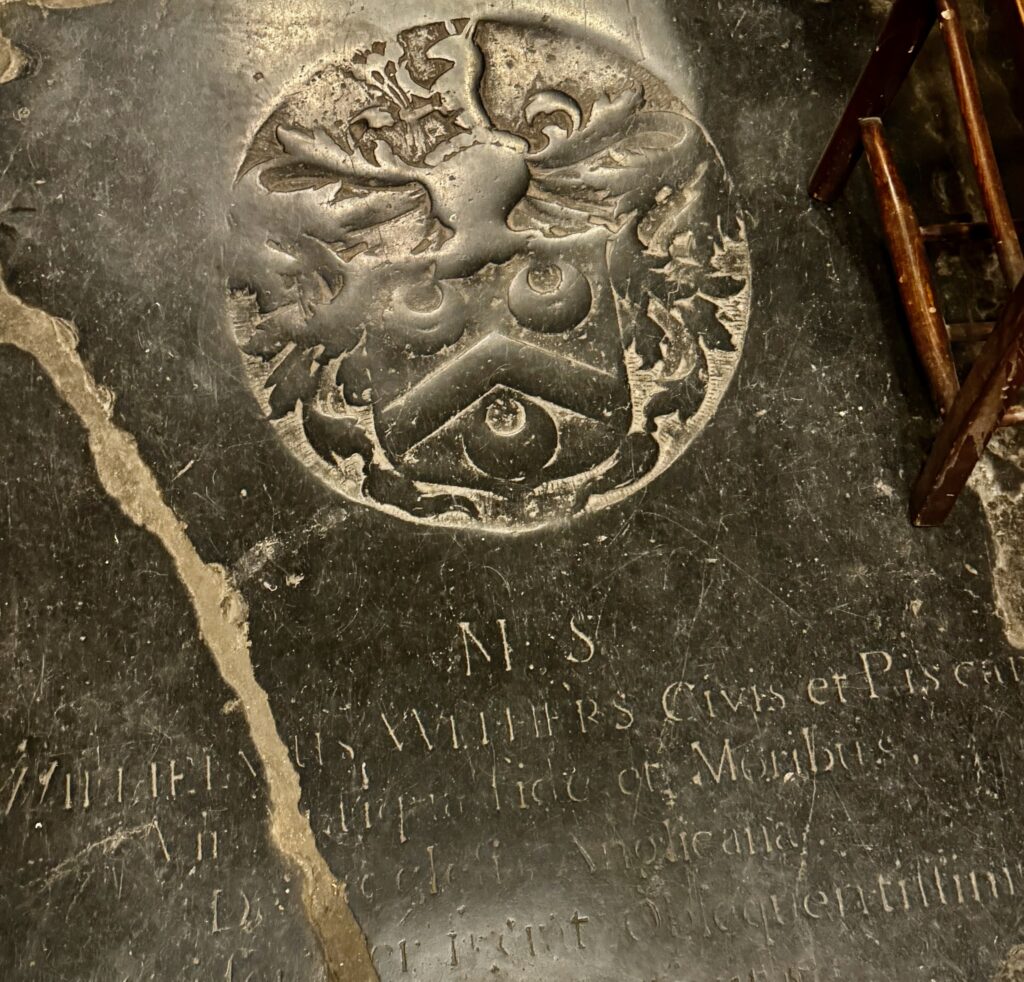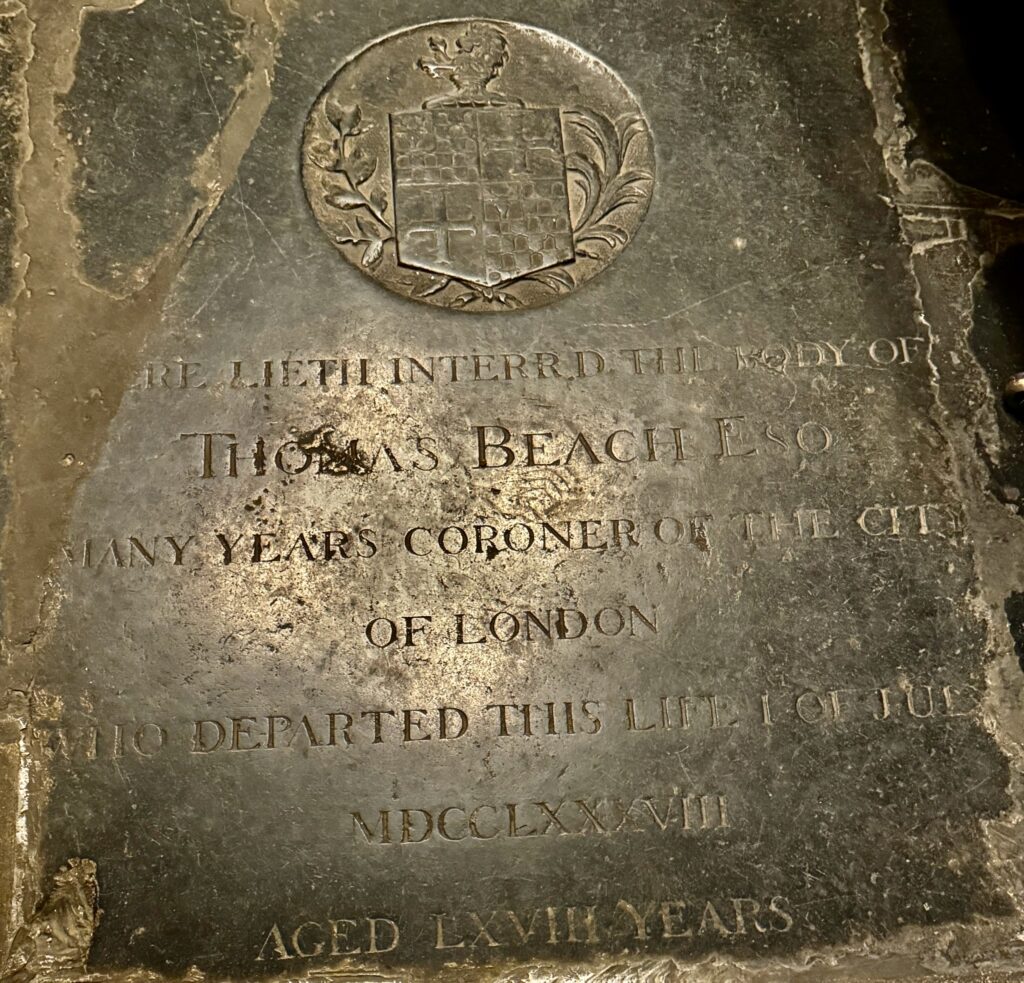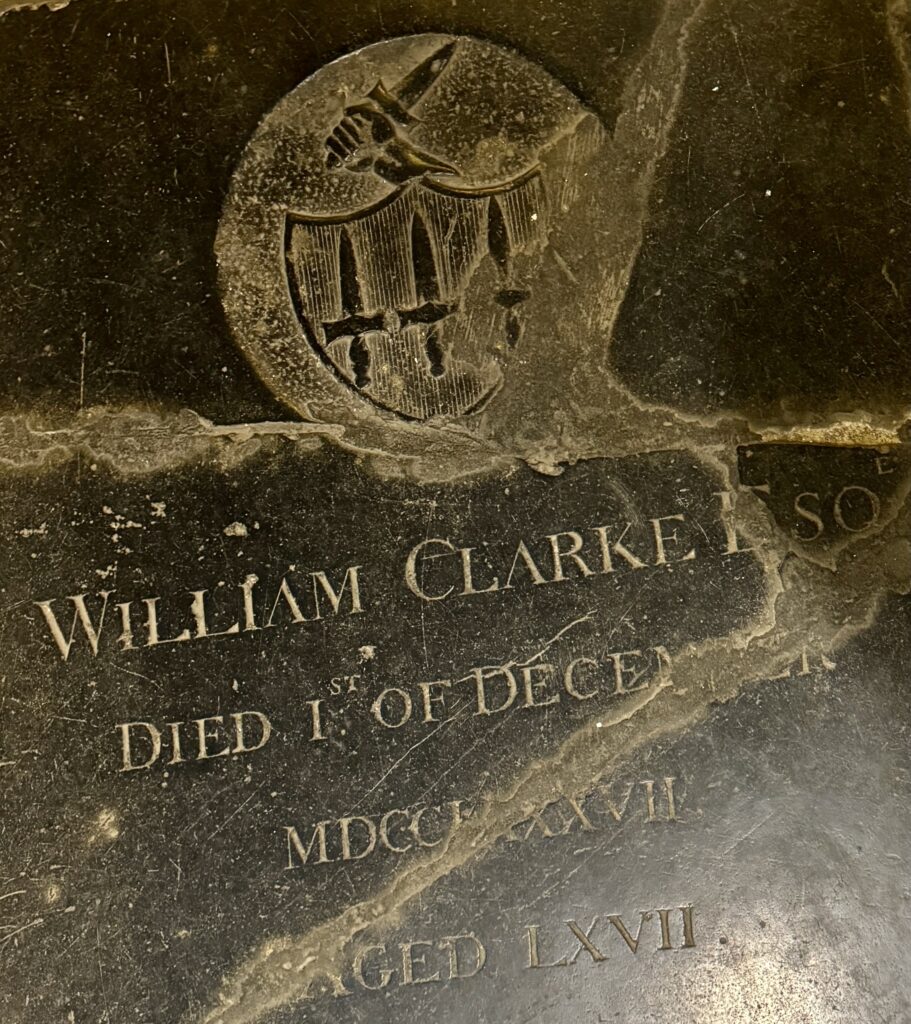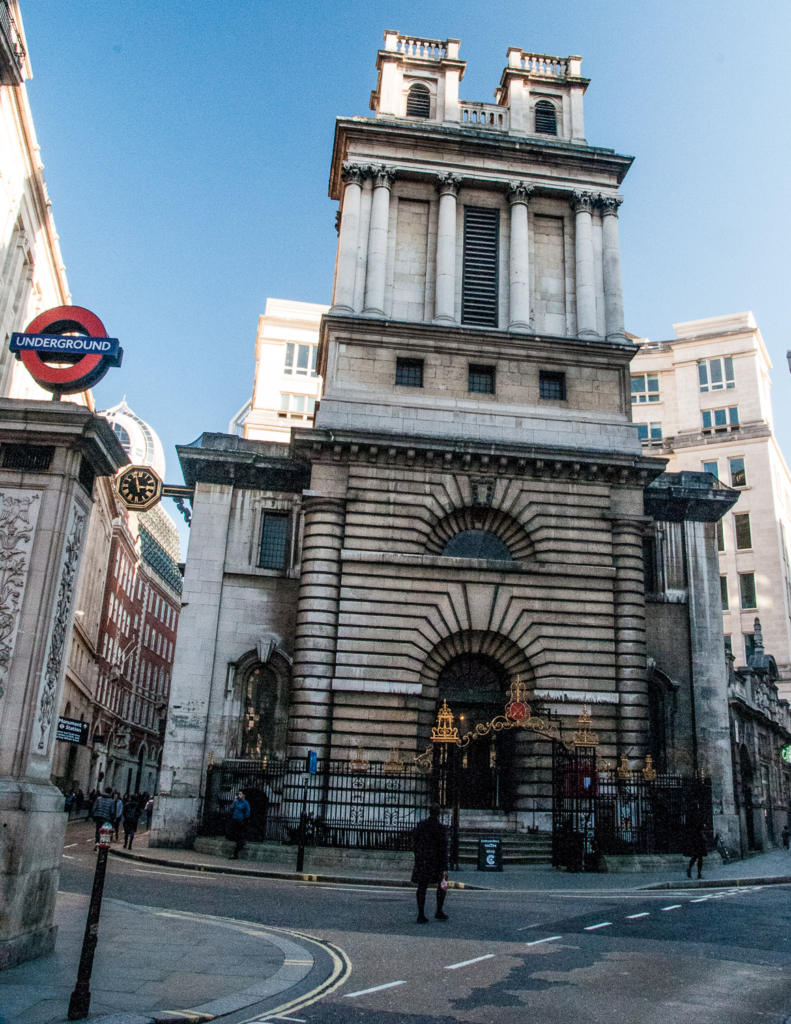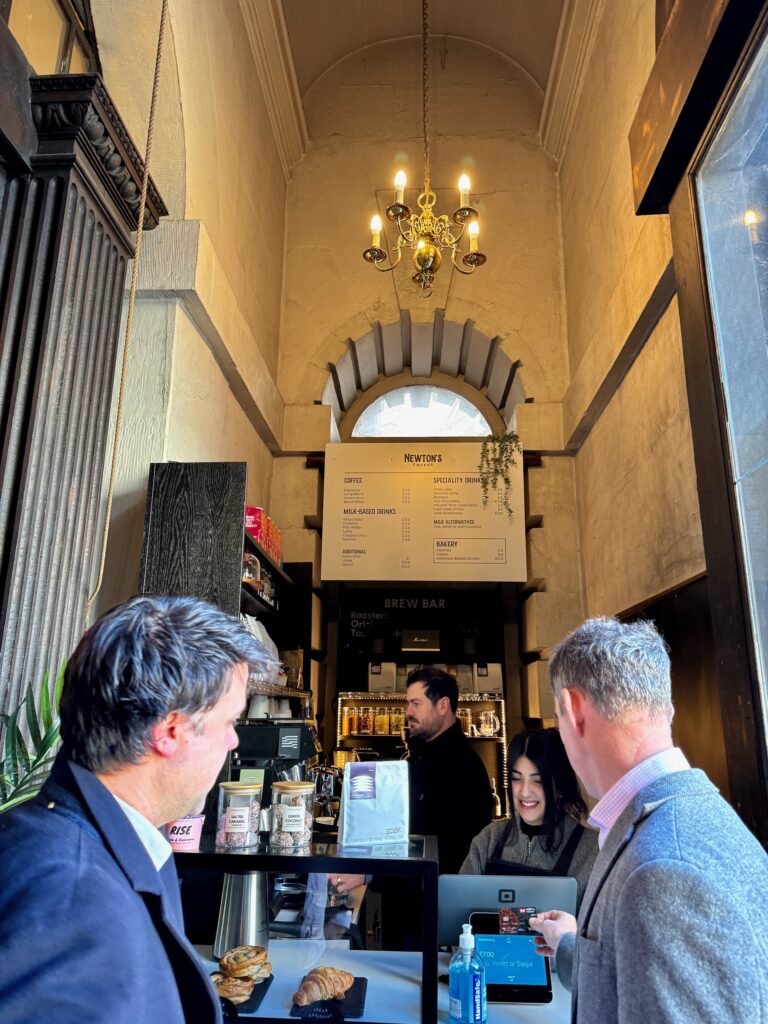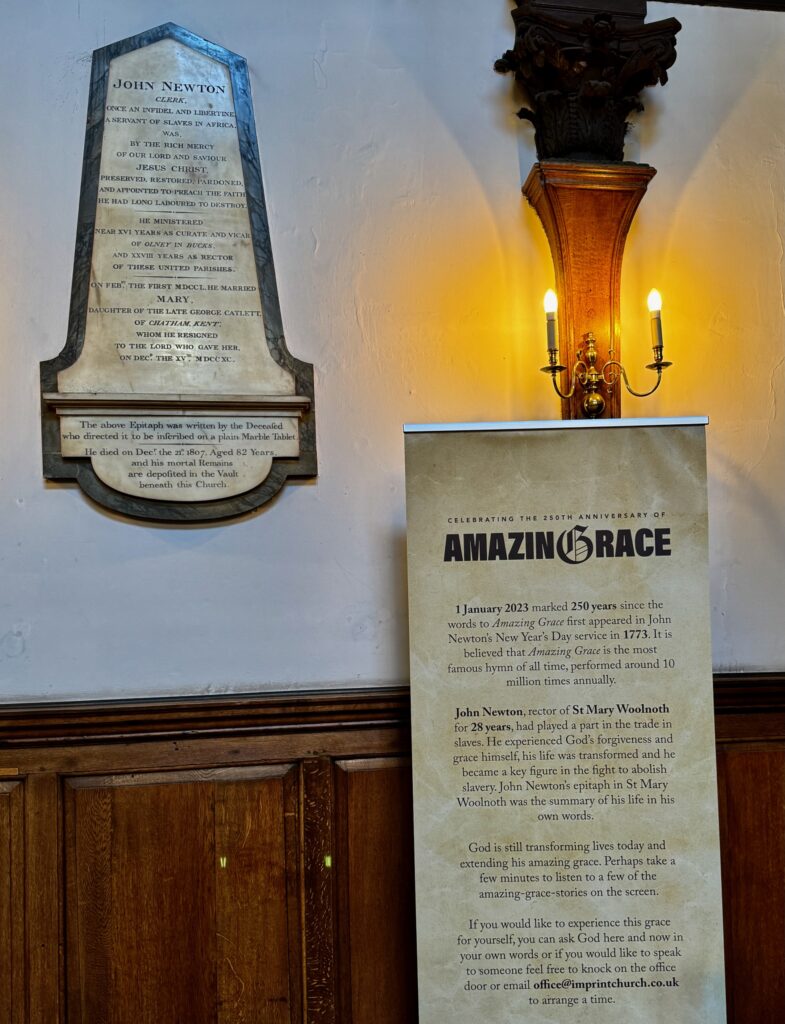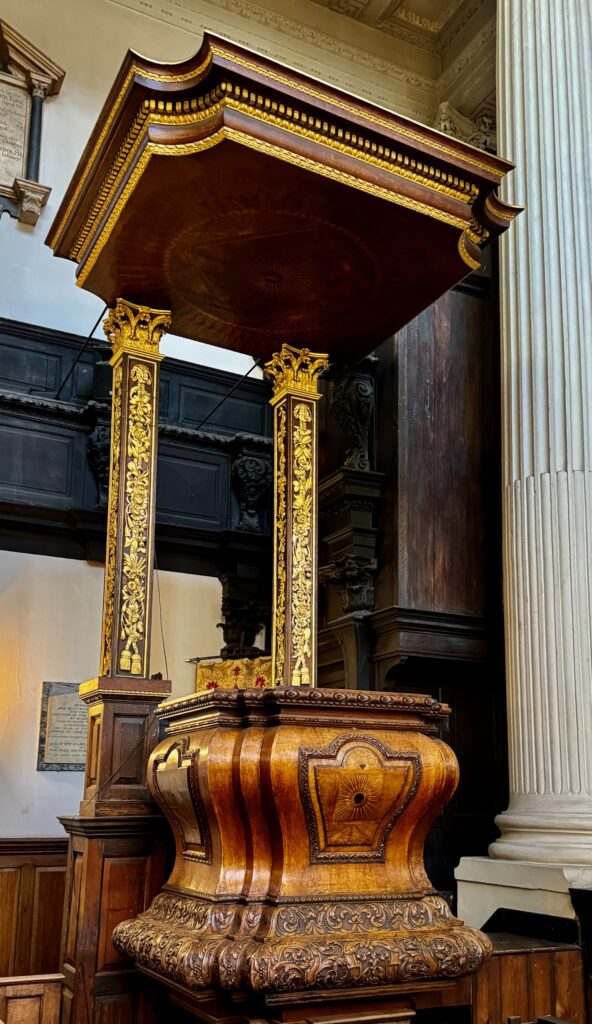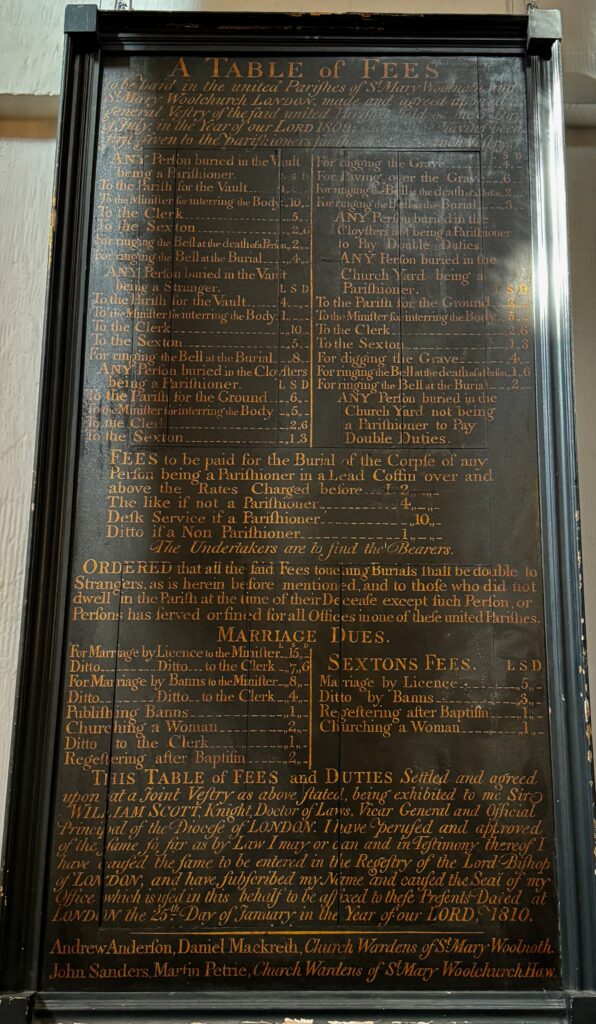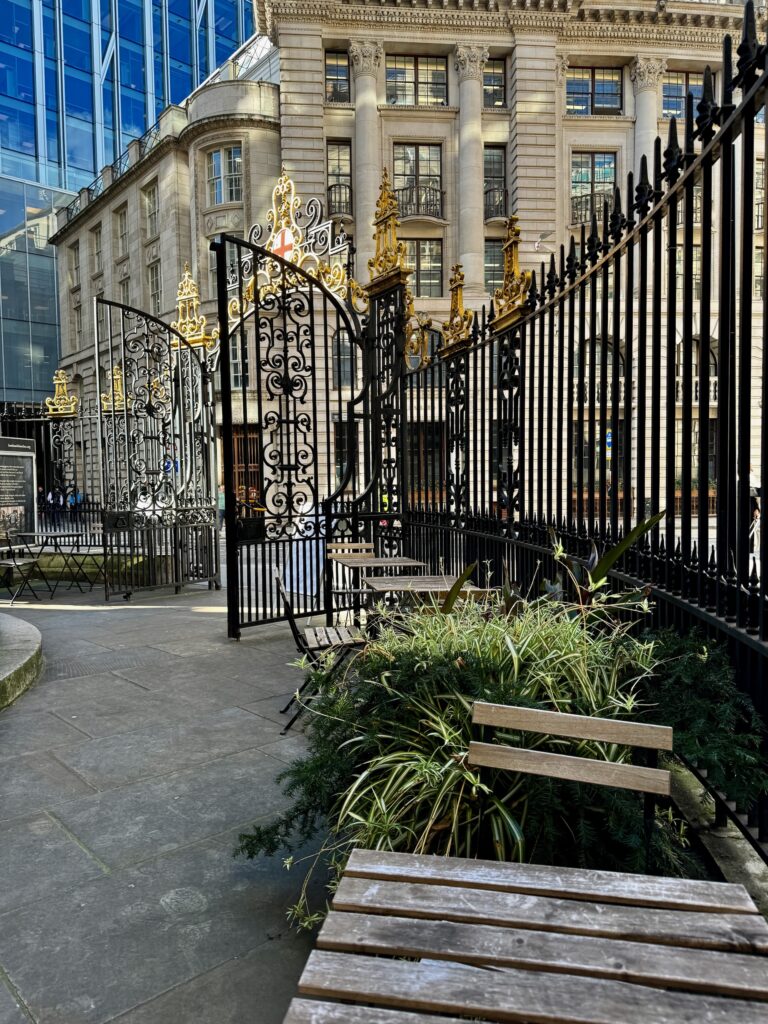One of the aspects of this church that impresses me most is how it was reconstructed after direct hits by bombs during the Blitz.
The interior today …
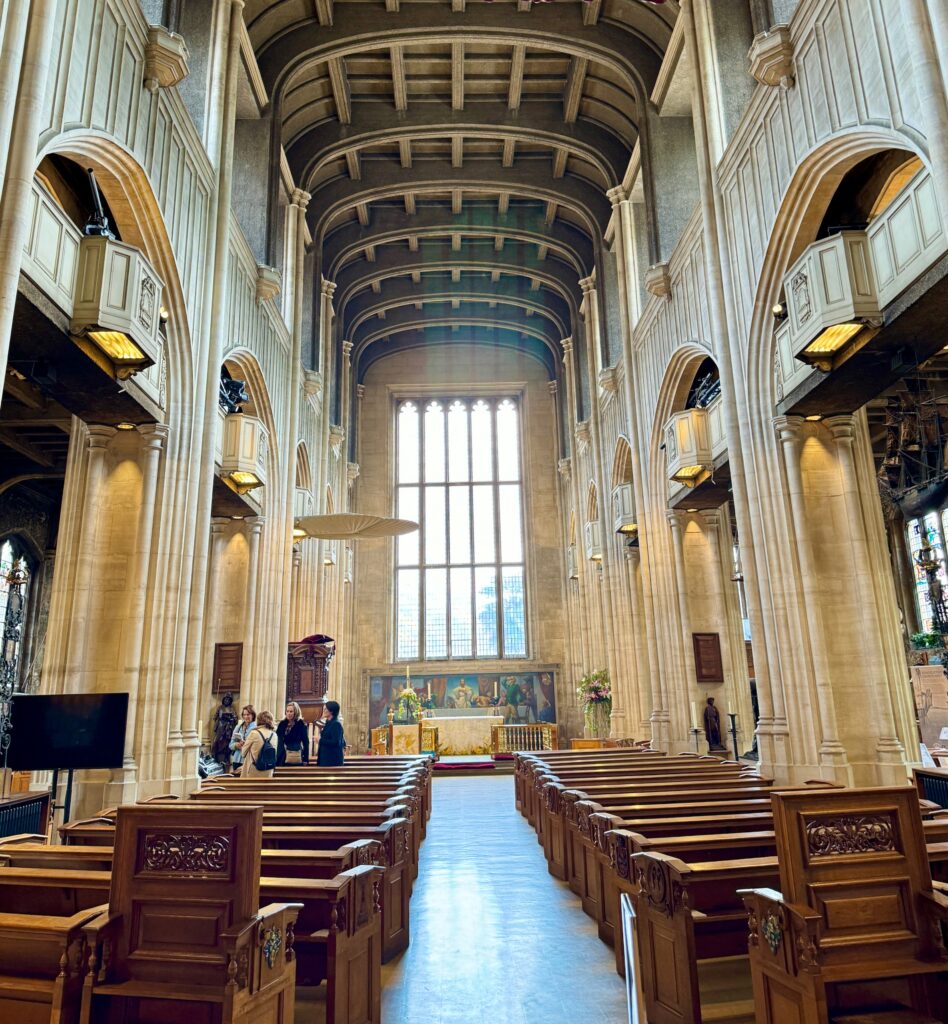
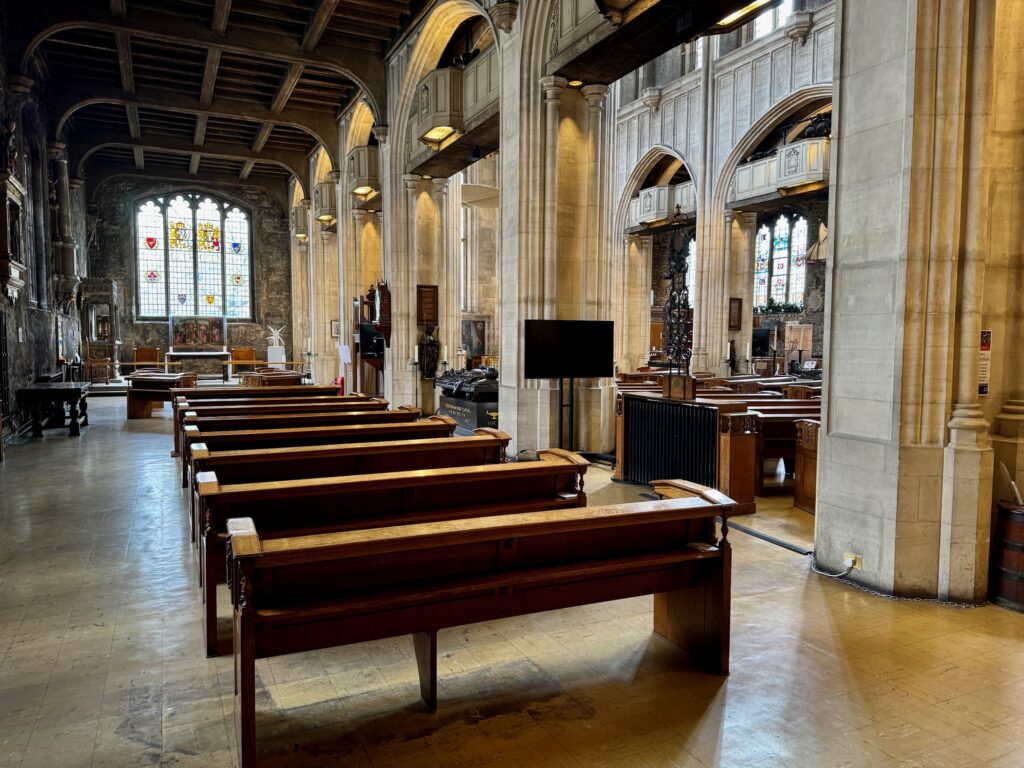
The church was bombed on two occasions during the Blitz: first the east end was badly damaged by a bomb in December 1940, and three weeks later the whole building was gutted by incendiary bombs, leaving only the tower and outer walls standing. This photo from the 1947 publication The Lost Treasures of London by William Kent shows the devastation …
Here it is last week on a wet and windy day looking from the east …
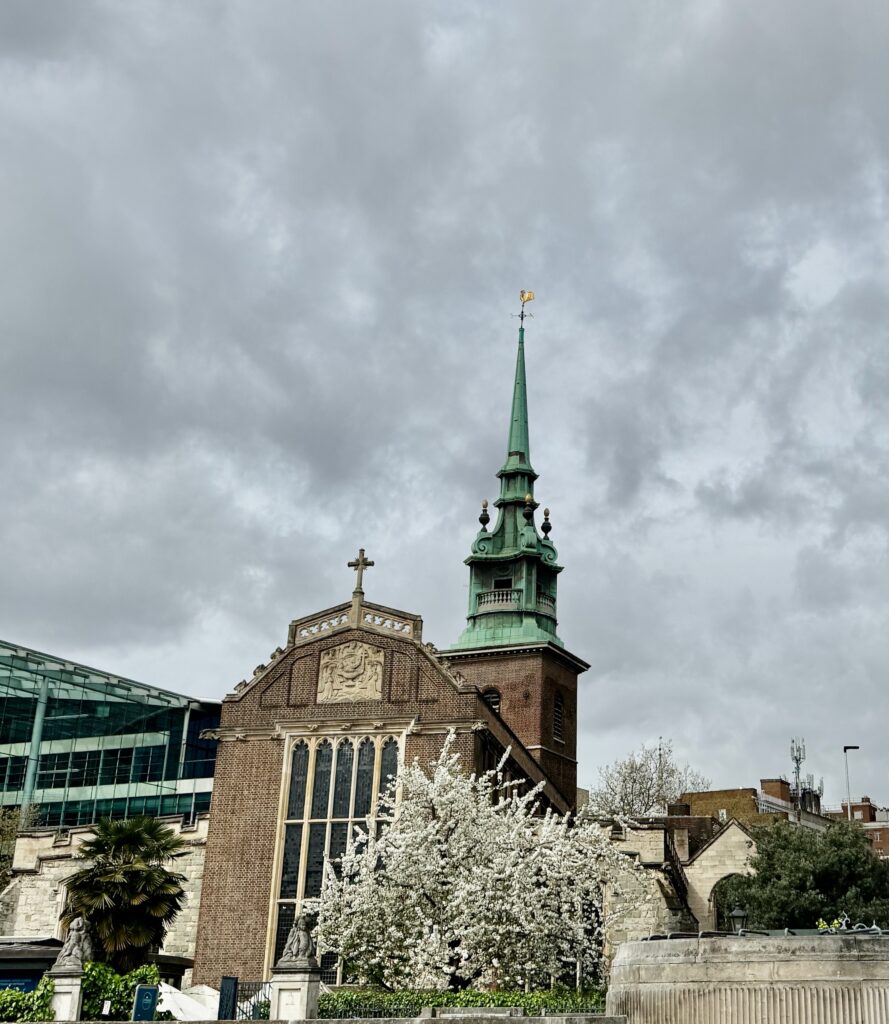
Before entering the church from this direction I suggest a short diversion.
On Tower Hill Terrace you will find this pretty sculpture. It’s called The Sea and incorporates a tribute to Sir Follett Holt, KBE, the first Chairman of the Tower Hill Improvement Trust, who died 20th March 1944 …
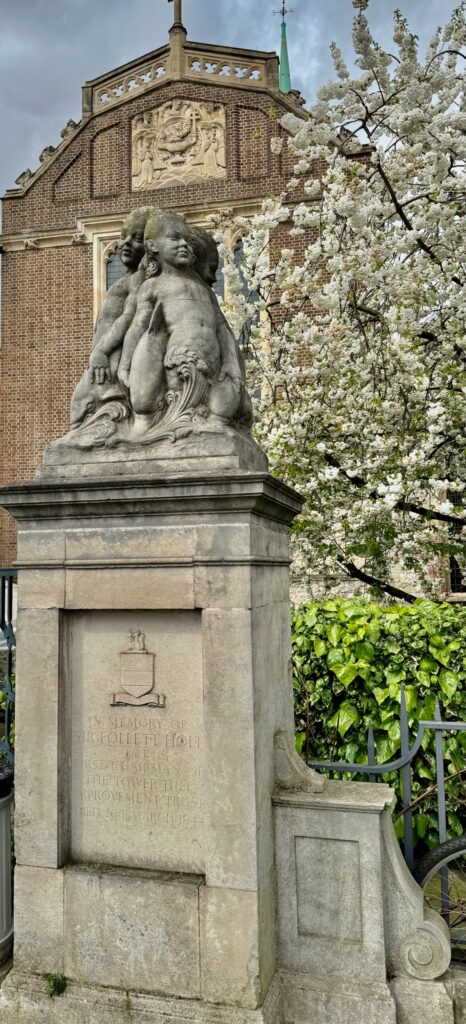
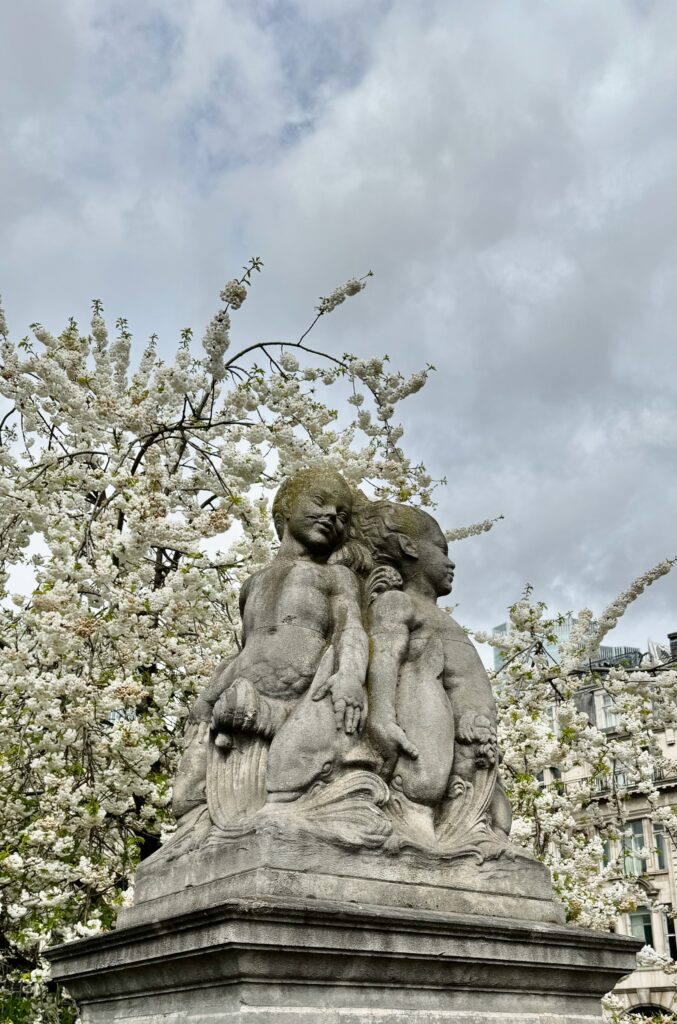
It is one of two gate posts – this is its partner …
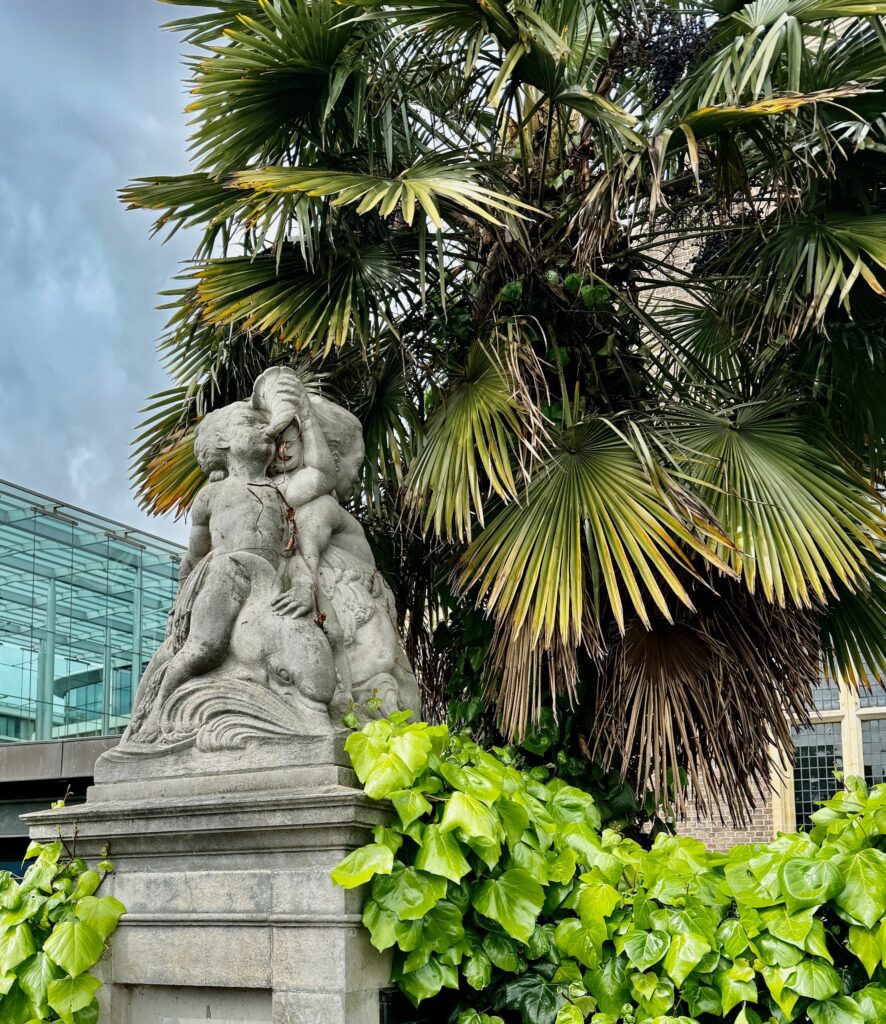
The PMSA says ‘Each of these groups comprises two children with dolphins swimming around them. Their frolicking pagan style contrasts rather vividly with the relief of the Toc H Lamp, also by Cecil Thomas, on the east wall of All Hallows behind them’
The Toc H relief …
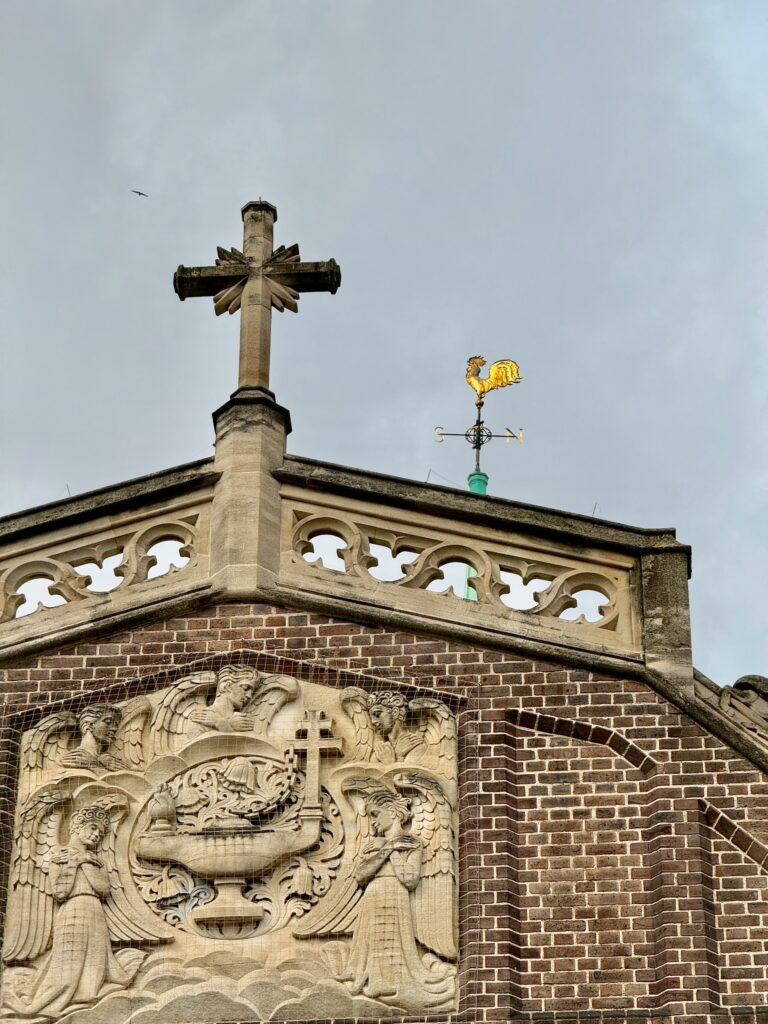
I walked down the little path alongside the west wall of the church …
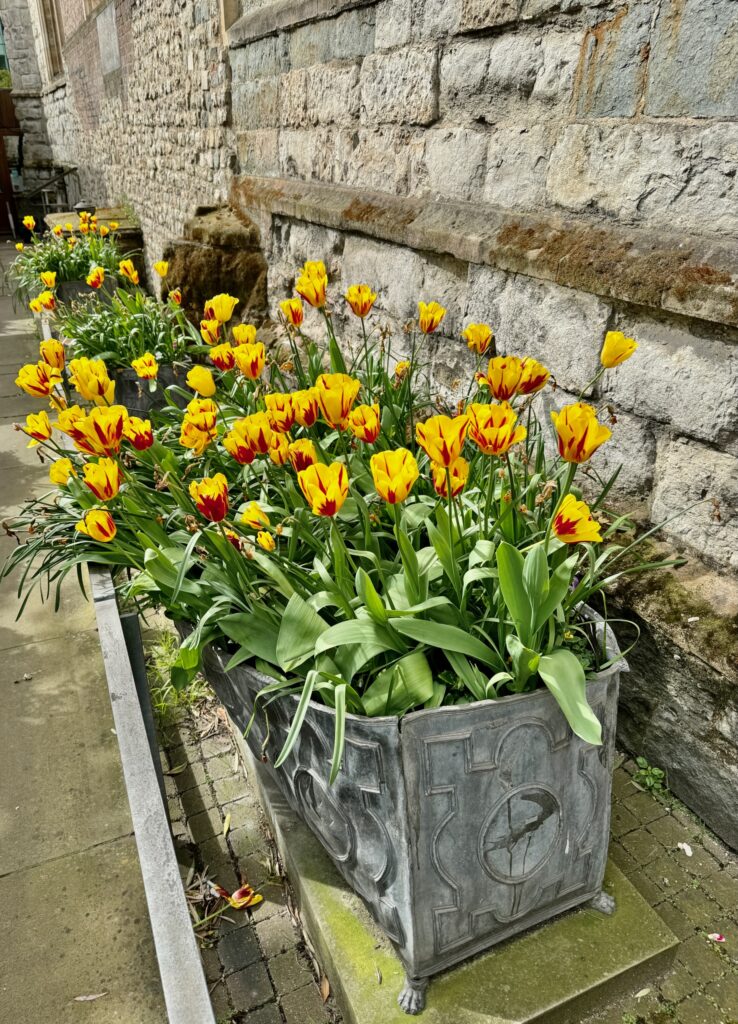
Embedded in the wall was this memorial to Samuel Gittens MD. It has three little cherubs heads and refers to his parents ‘Samuel and Mary Gittens of Barbados’ …
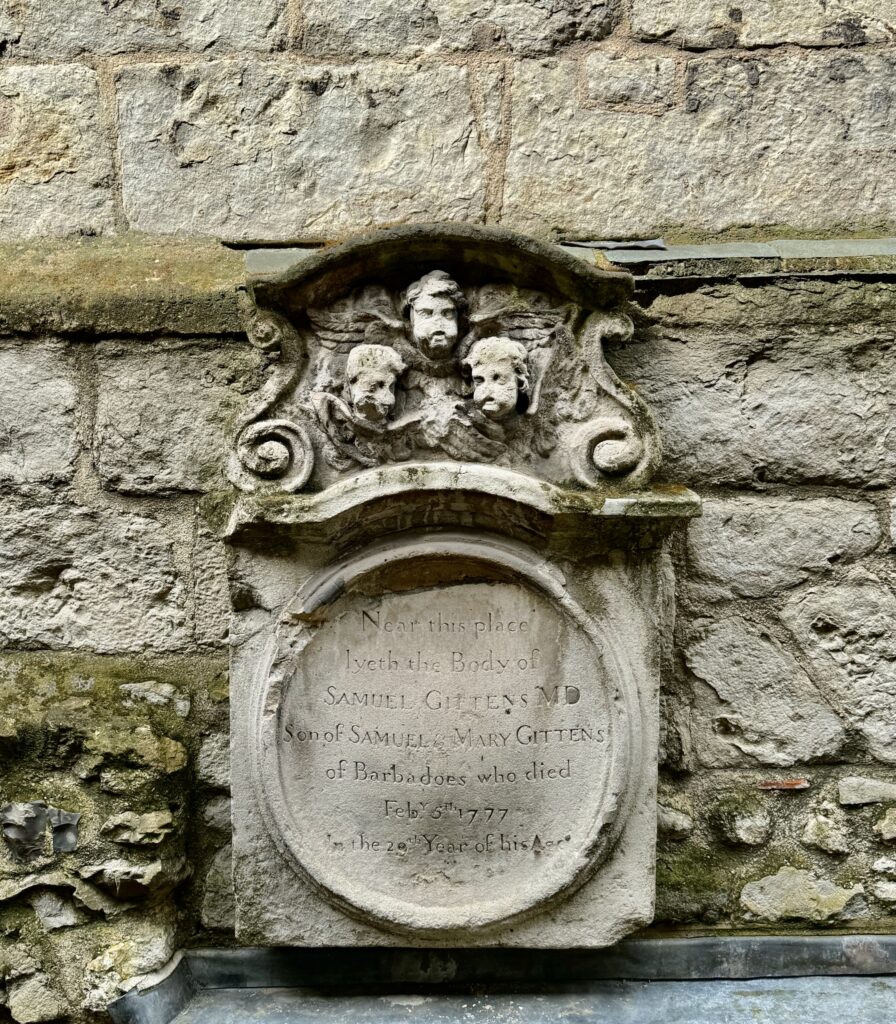
Alongside the north wall is the ‘Secret Garden’ …
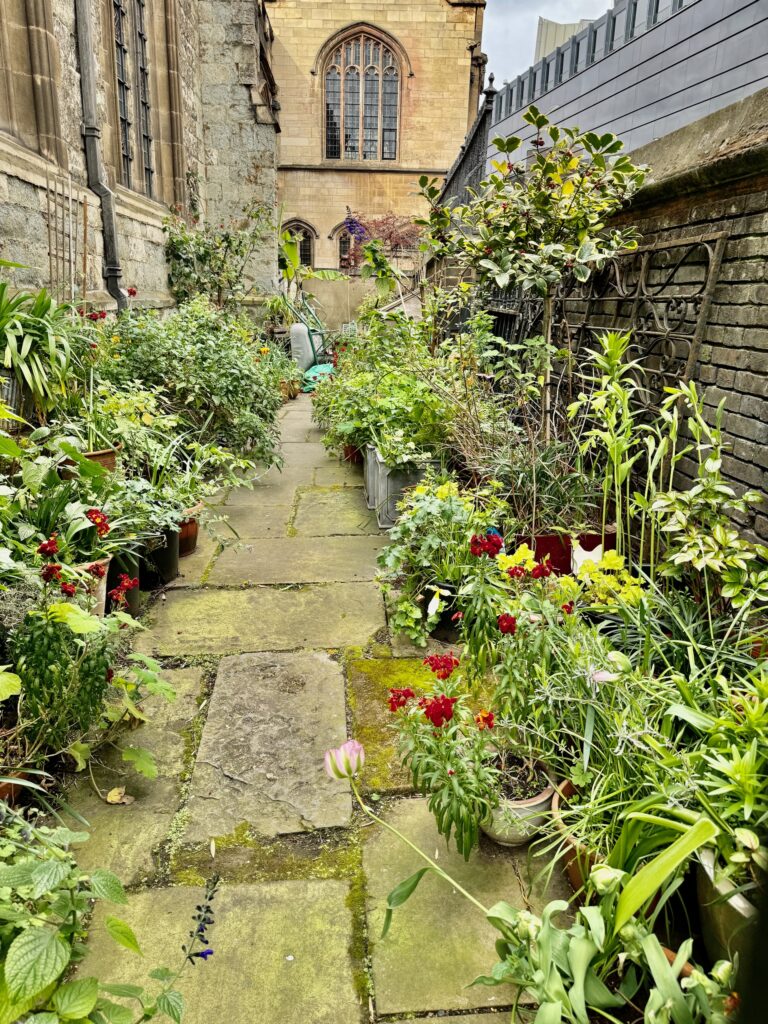
It is such a shame that, even though the church is right alongside the Tower of London, it doesn’t seem to get many visitors. Do visit if you have the opportunity.
Here are just a few of its treasures.
This is the tomb of the Reverend ‘Tubby’ Clayton CH MC who became vicar of the Church in 1922 and remained there until 1963. He is best known for his work initially as an army chaplain during the First World War and in particular the establishment of Talbot House, a unique place of rest and sanctuary for British troops. After the war the spirit and intent of Talbot House became expressed through the Toc H movement …
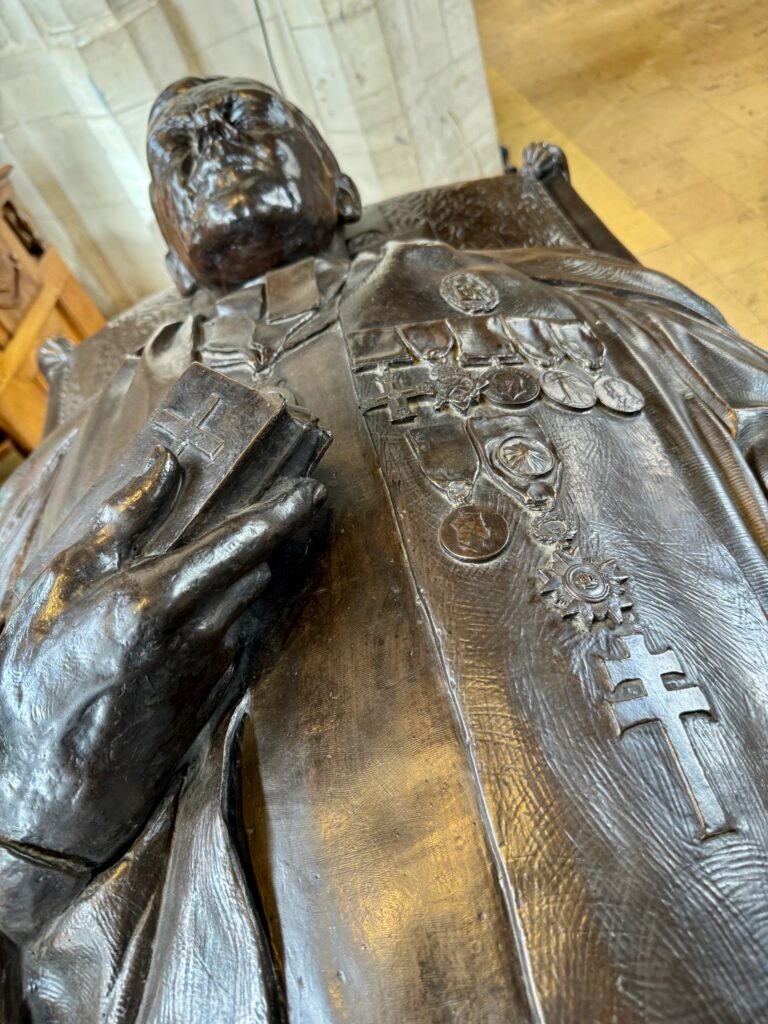
His effigy is one of the last works by Cecil Thomas, the ‘soldier sculptor’, and Tubby’s dog Chippie sits on a tassellated cushion at his feet …
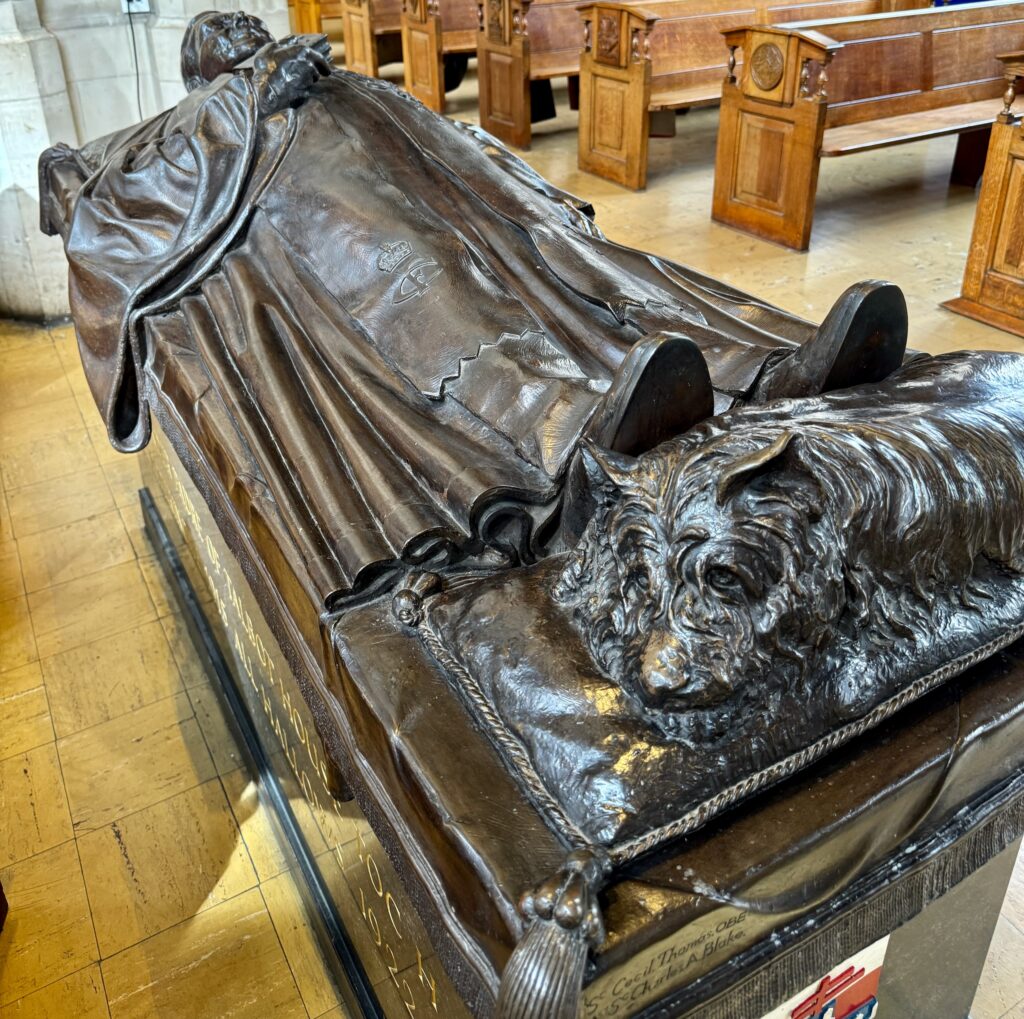
Clayton owned a succession of Scottish Terriers, one of them a gift from the Queen Mother. All of them were called Chippie.
Another work by Thomas, the Forster Memorial …
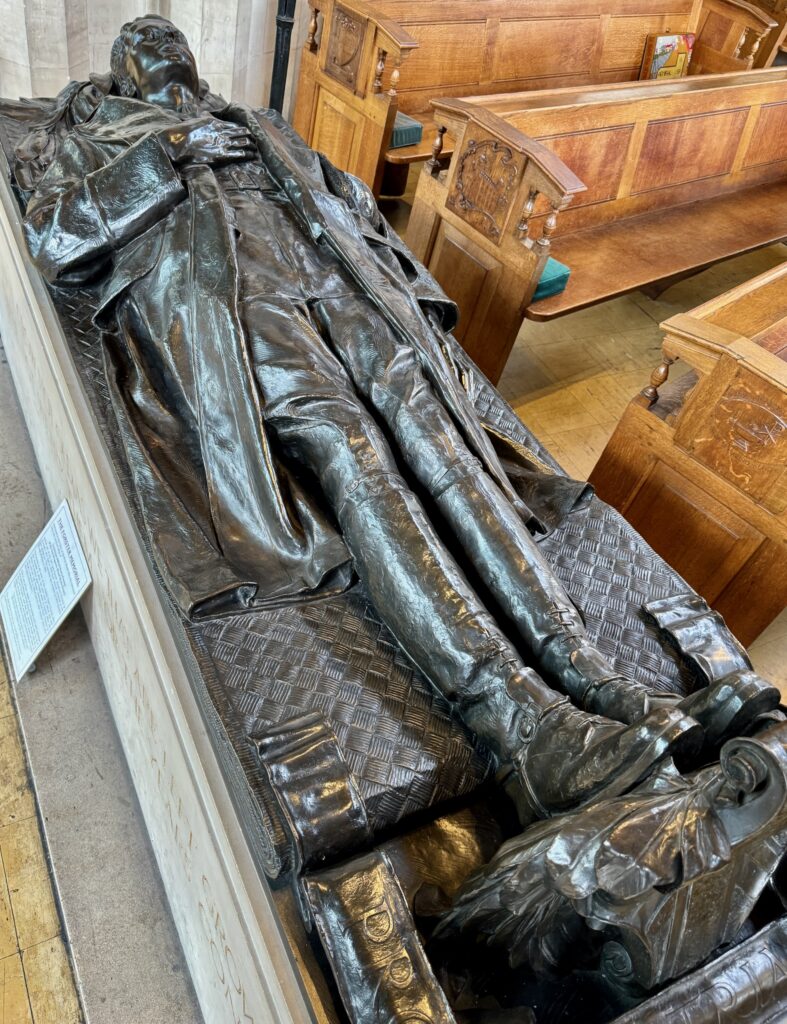
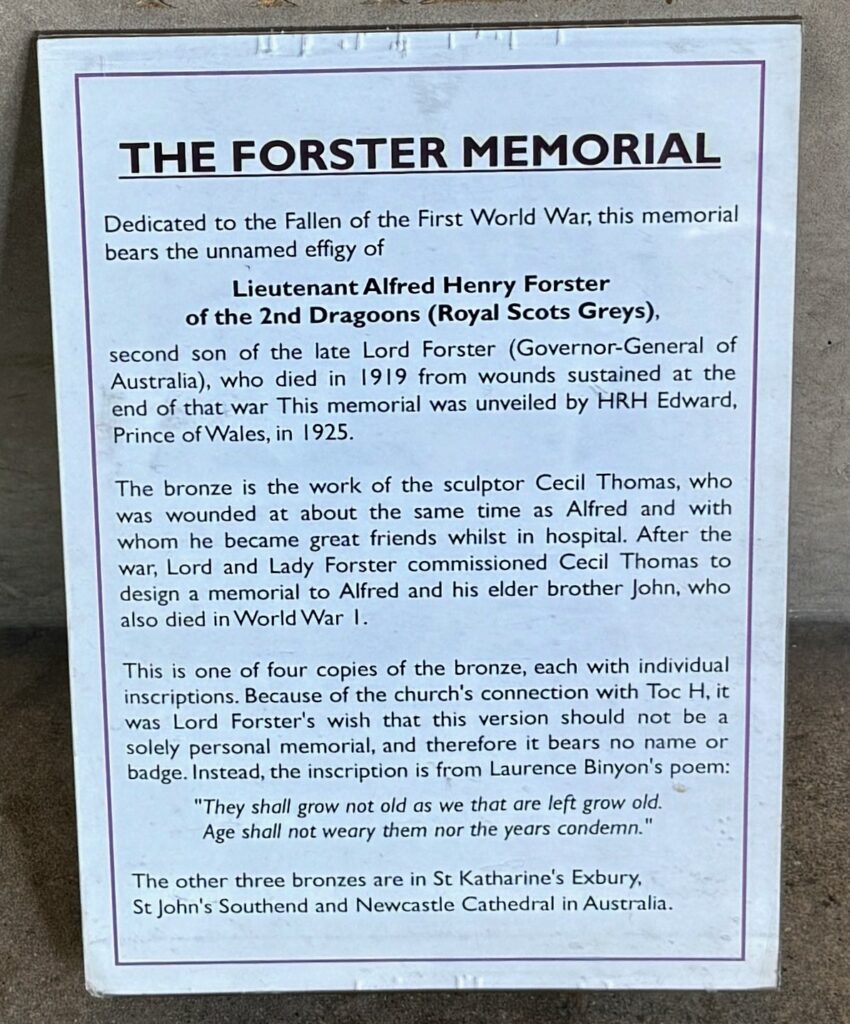
The magnificent font cover is by Grinling Gibbons and dates from 1682 …
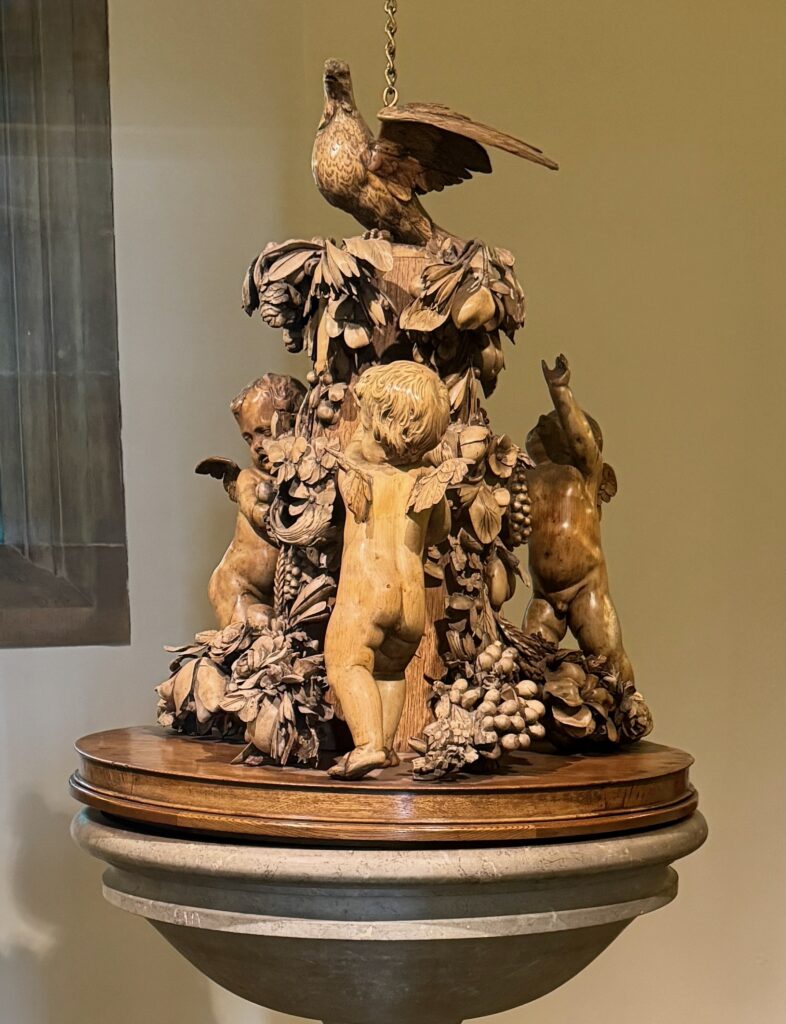
The present pulpit dates from around 1670 and is carved in the Gibbons style. It comes from the church of St Swithun’s, London Stone, which was destroyed by bombing and not rebuilt …
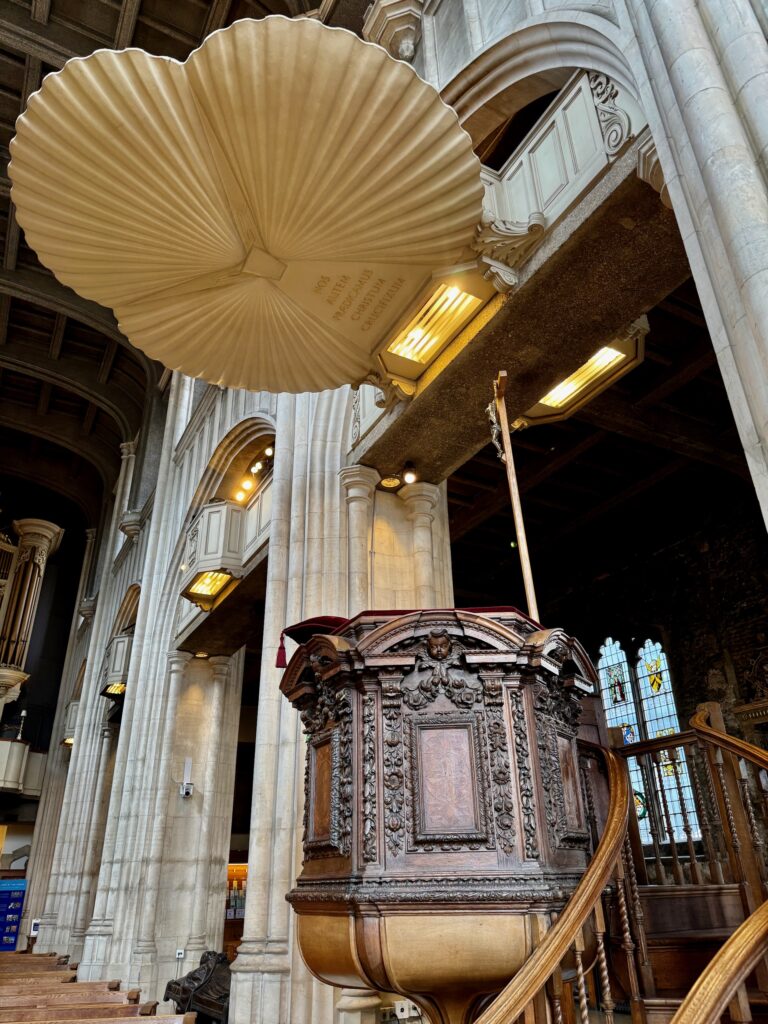
Above it is the tester, or sounding board, designed to represent three pilgrim shells associated with the pilgrimage of St James Compostella in Spain.
All Hallows is known as the seafarer’s church with strong connections to the Port of London Authority and to maritime history generally.
Mariners lost at sea with no known grave …
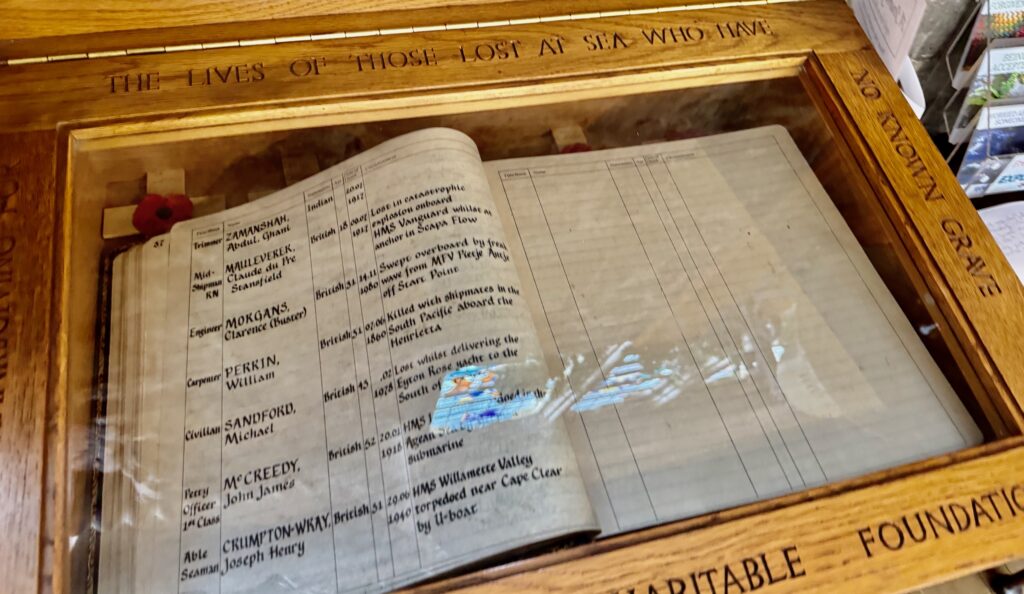
The stained glass windows, especially in the south aisle, also bear witness to the church’s close association with the sea and the river Thames …
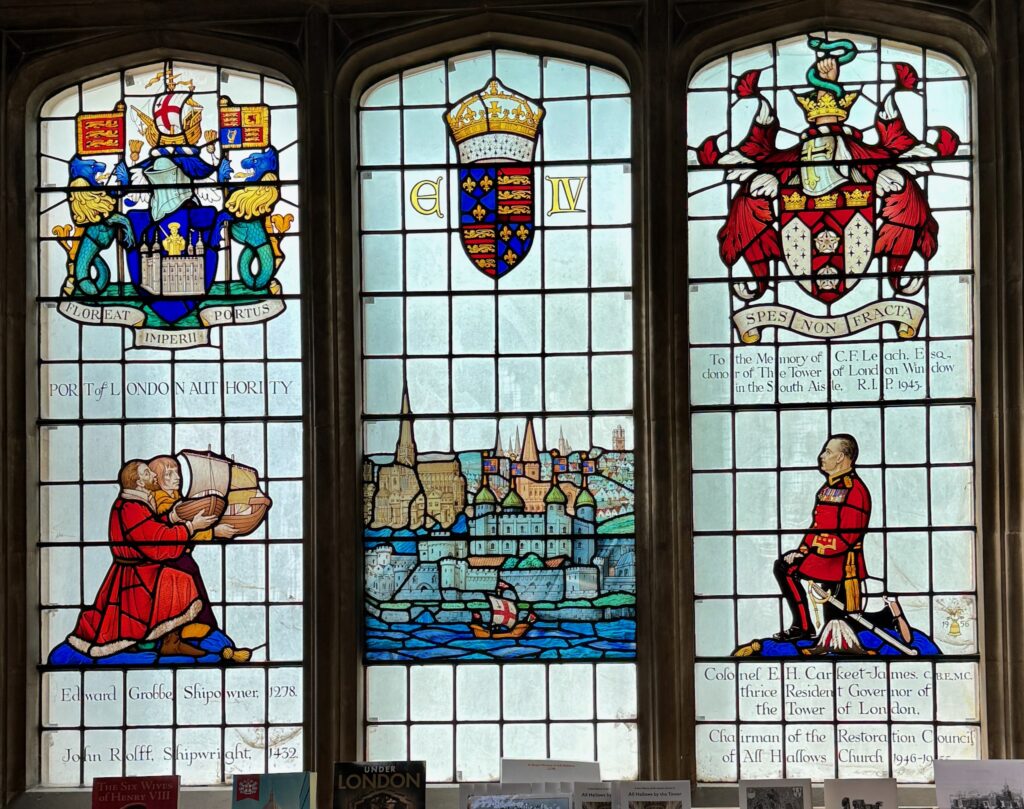
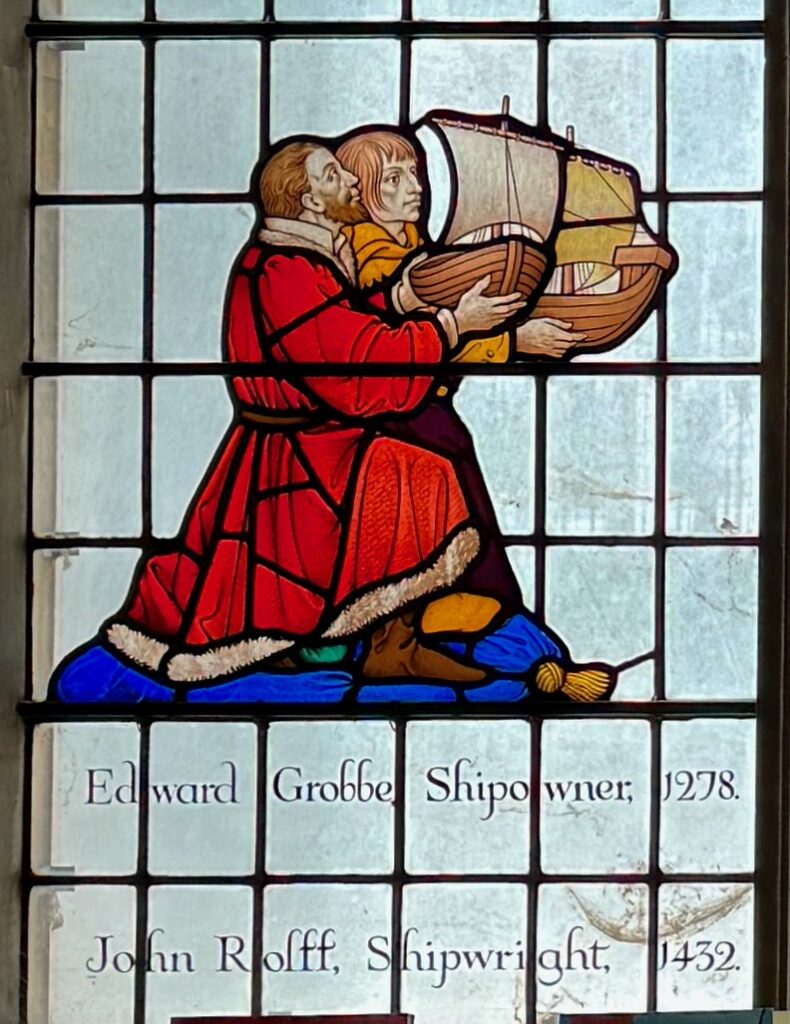
There are also, as you might expect, some superb model ships …
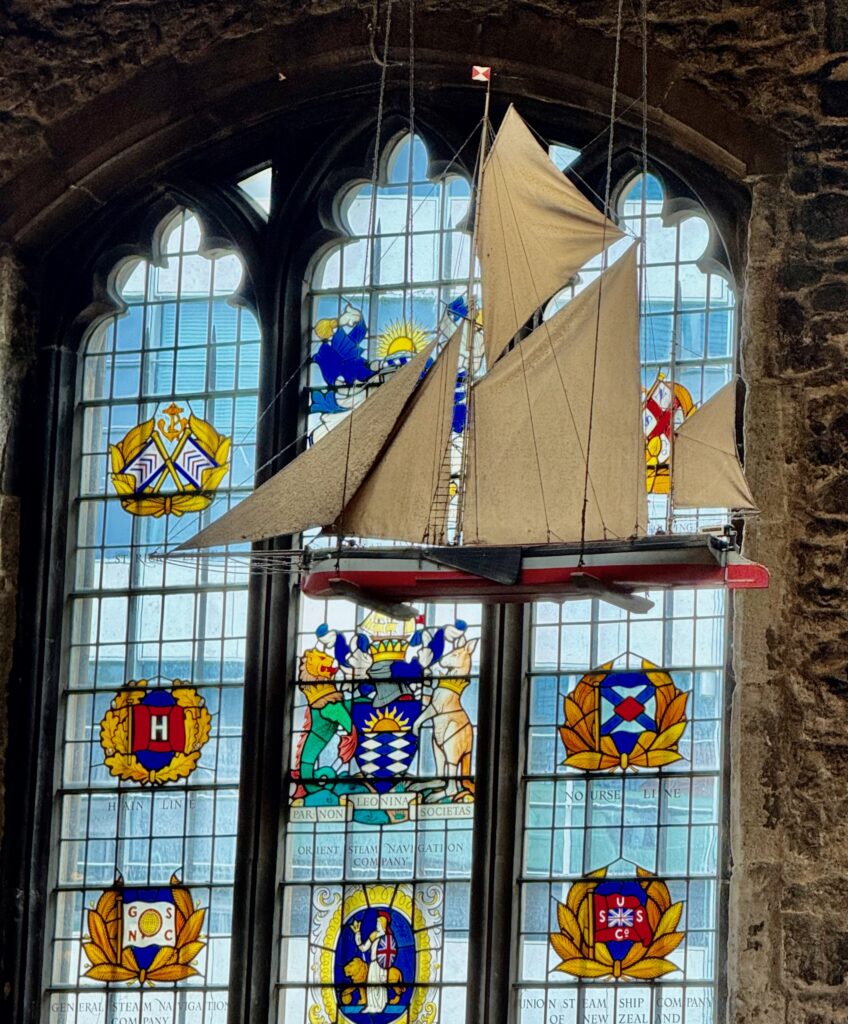
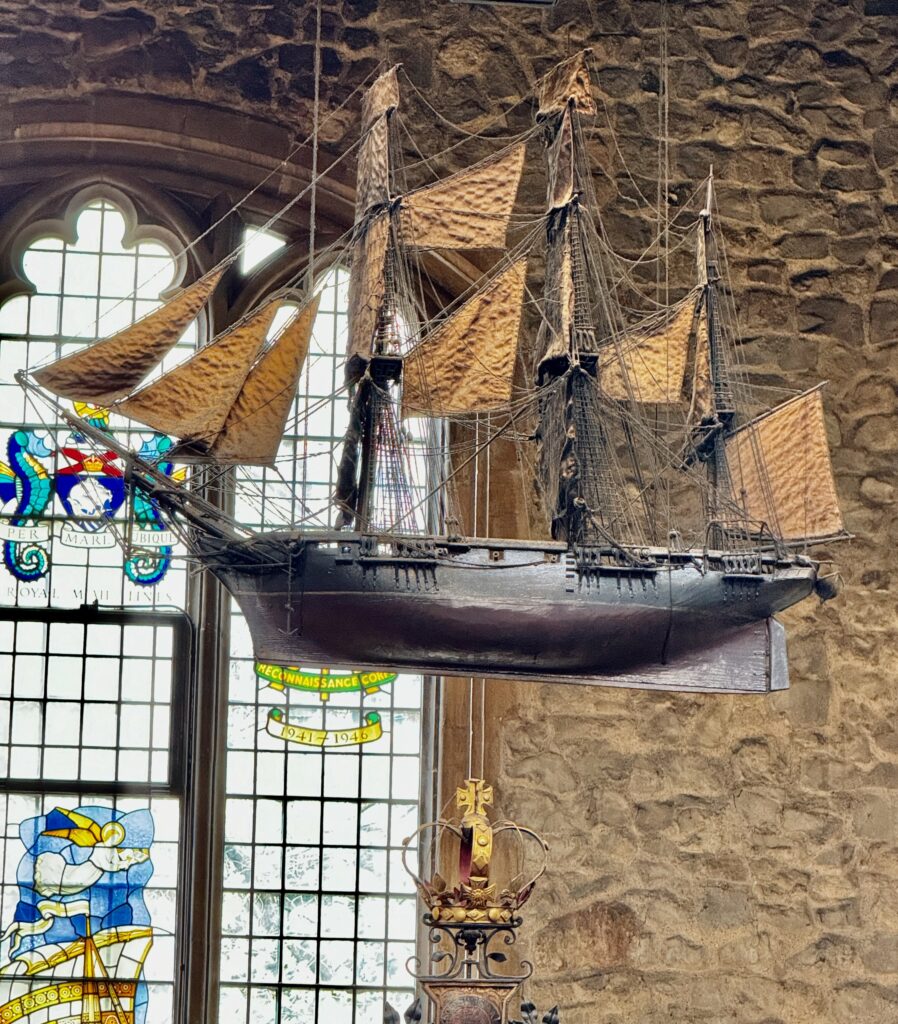
And what about this, Sir Ernest Shackleton’s electrically heated crow’s nest from the ‘Good Ship Quest’ on which he died on 5 January 1922 while in harbour in South Georgia …
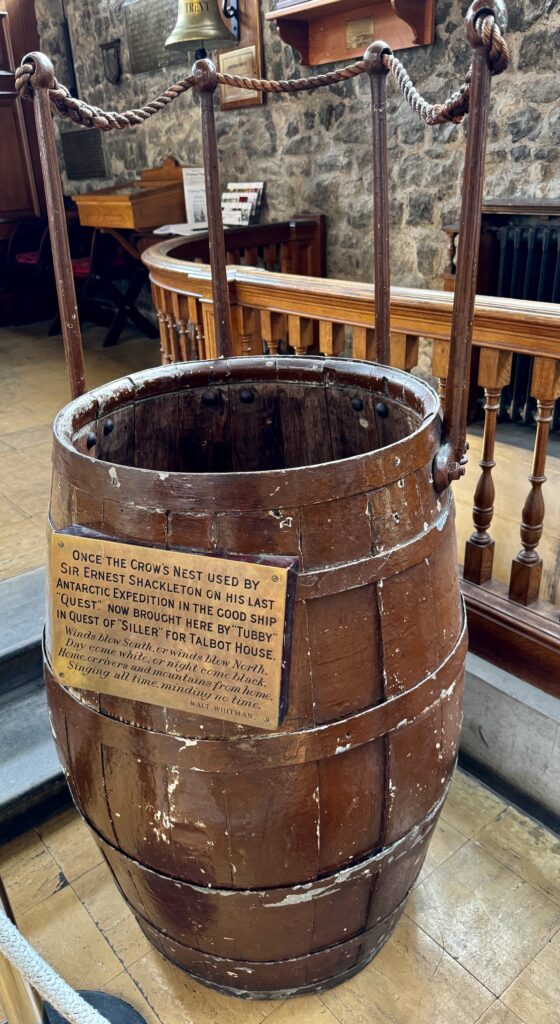

The man climbing to the crow’s nest in the picture is Frank Wild. He took over the leadership of the expedition after Shackleton died.
This picture was taken on the Nimrod Expedition (1907-1909). Wild is on the far left next to Shackleton. The other two men are Eric Marshall and Jameson Adams …
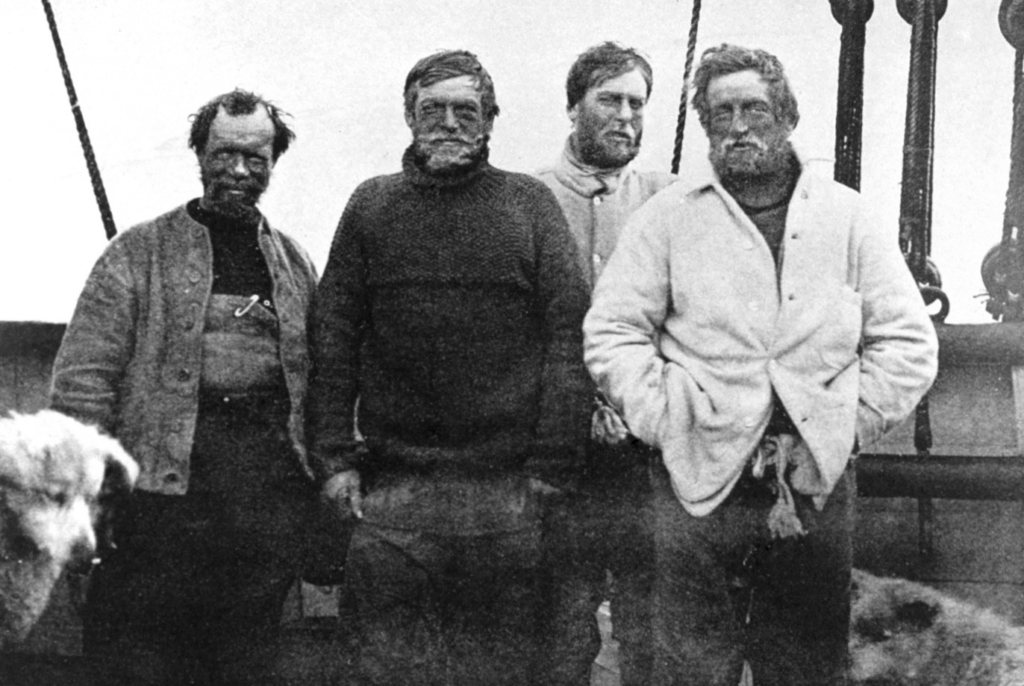
The 16th century monument to the Italian merchant Hieronimus Benalius who lived in nearby Seething Lane and died in 1583. He left instructions for Masses to be said for his soul …
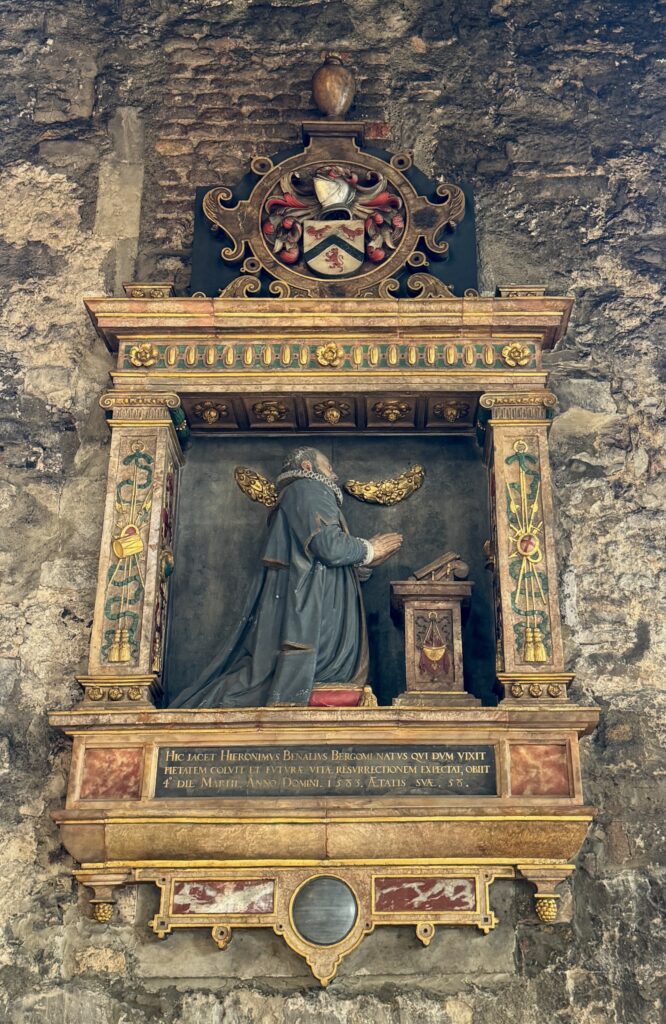
This wall monument contains the kneeling effigies of Francis Covell and his wife, each in long robes and with ruffs at the necks. They kneel facing one another, and probably originally had a desk between them which has disappeared …
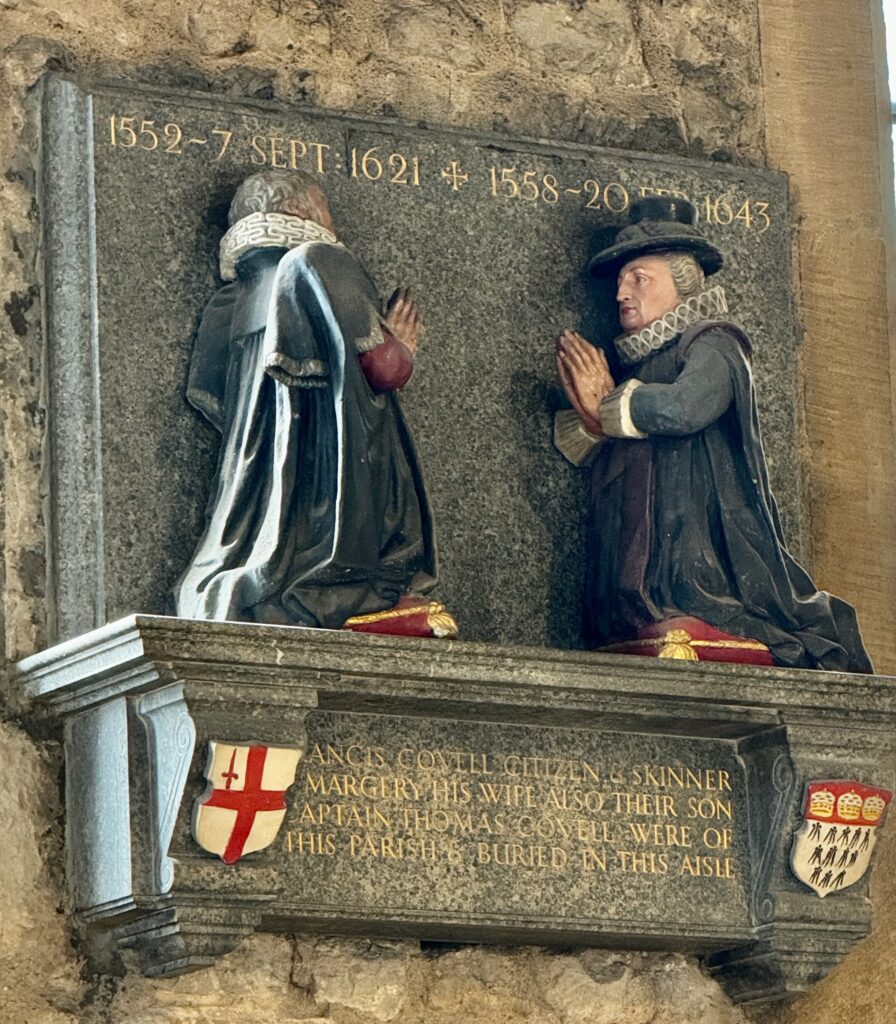
In the Lady Chapel is the tomb of Alderman John Croke from 1477. It was destroyed during the war, but rebuilt and restored from the remaining fragments …
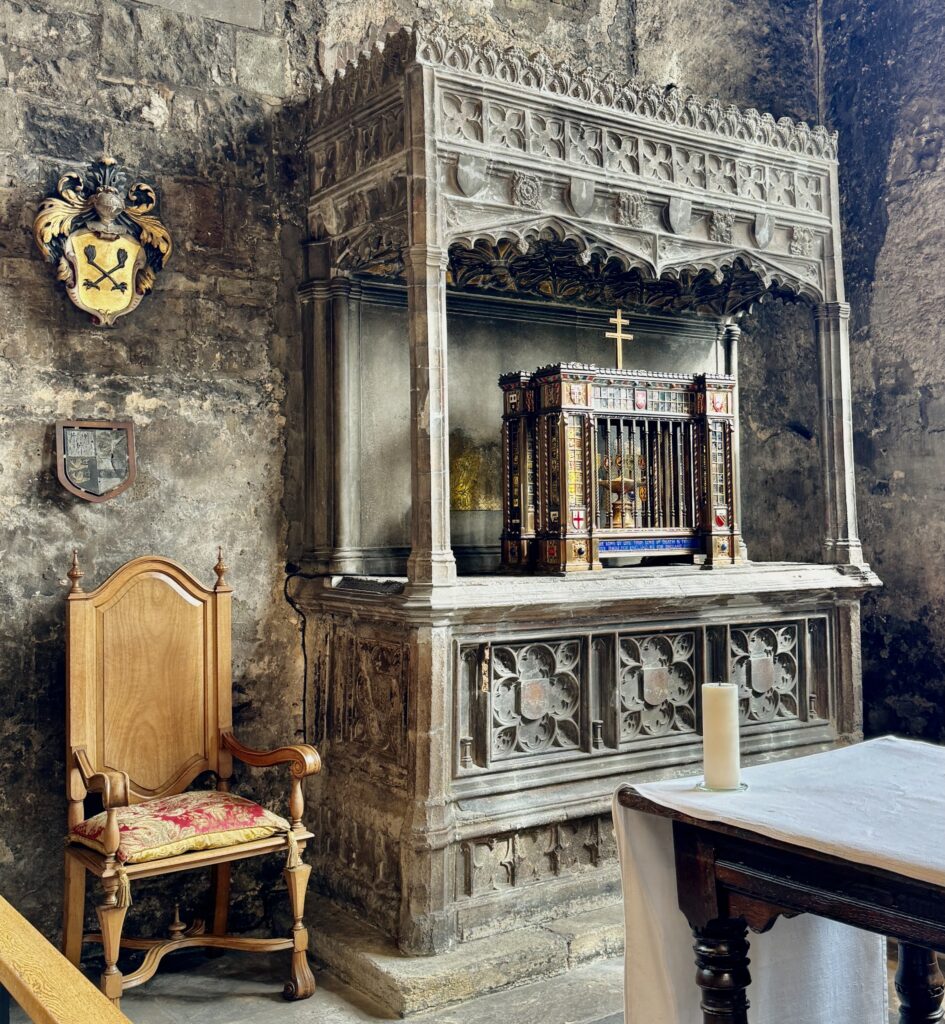
This is the formidable pillar monument to Giles Lytcott and his family …
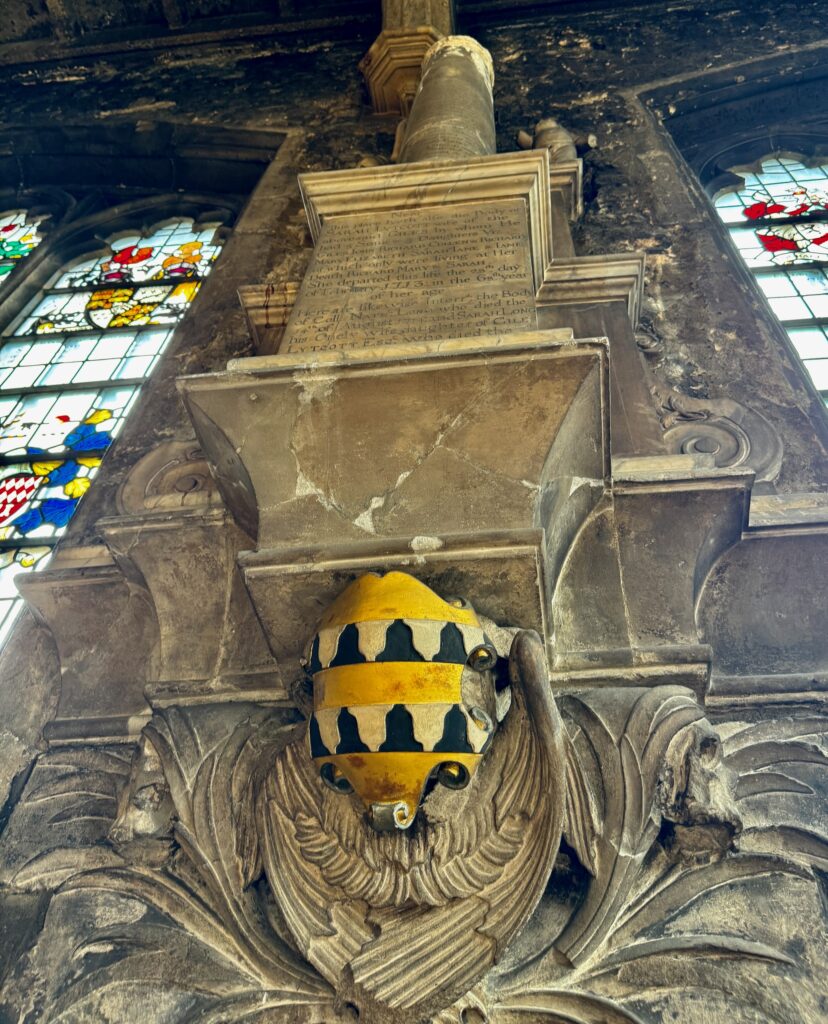
The lower inscription …
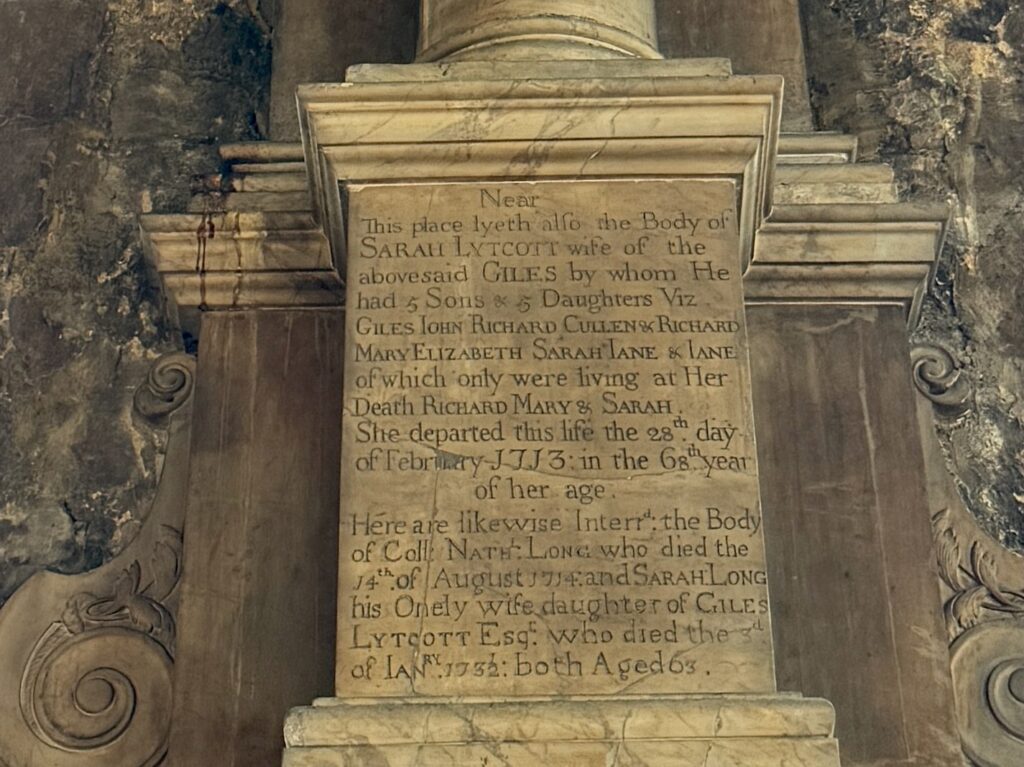
Ten children but only three living at the time of the mother’s death. It didn’t matter how rich you were, child mortality was high.
You can read the full insciption here. Intriguingly it refers to an ancestor ‘poisoned in the Tower’.
A niche in the wall holds a 17th century wooden statue of St. Antony of Egypt …
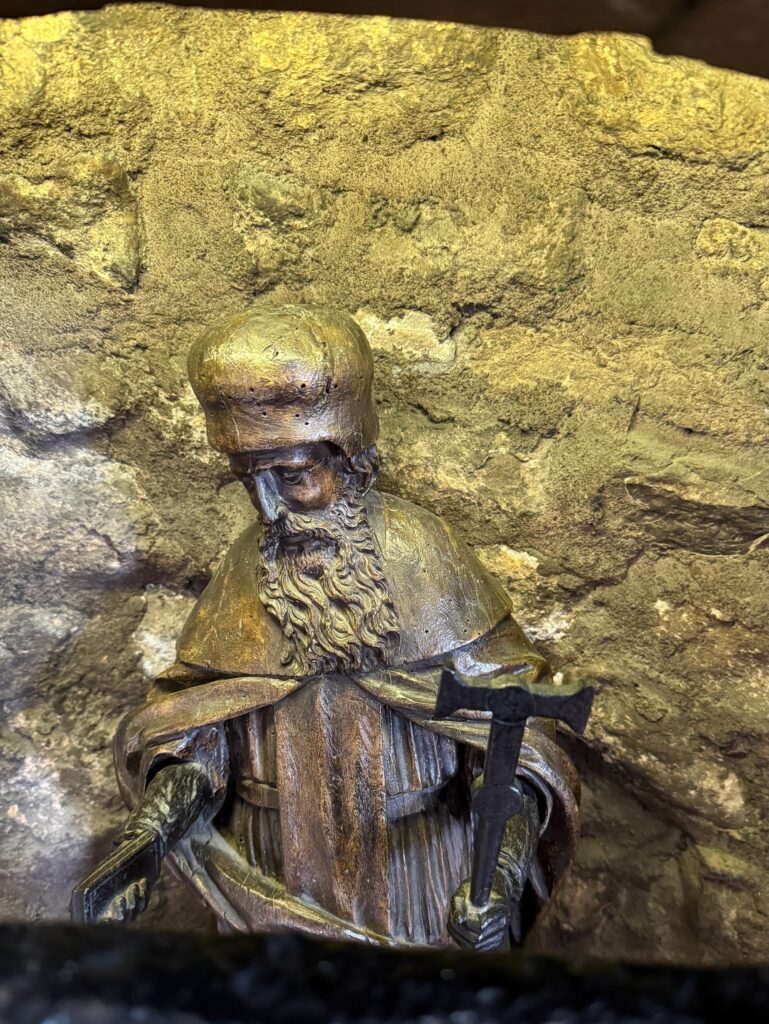
There are several fine 18th century sword rests …
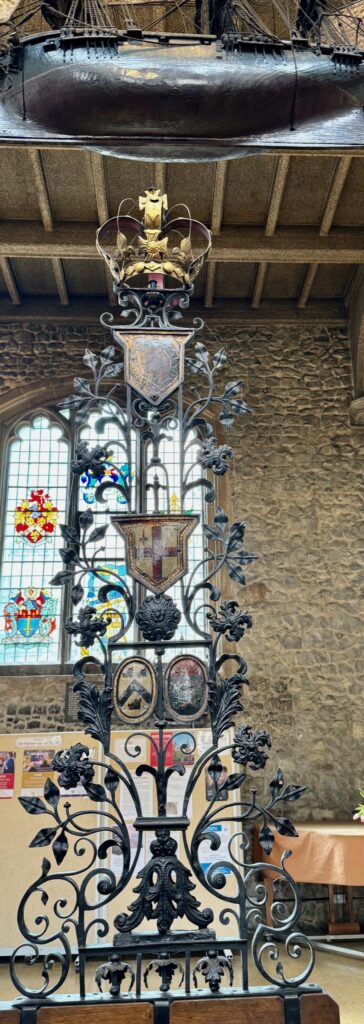

How fantastic that this brass from 1612 has survived to tell a sad story …
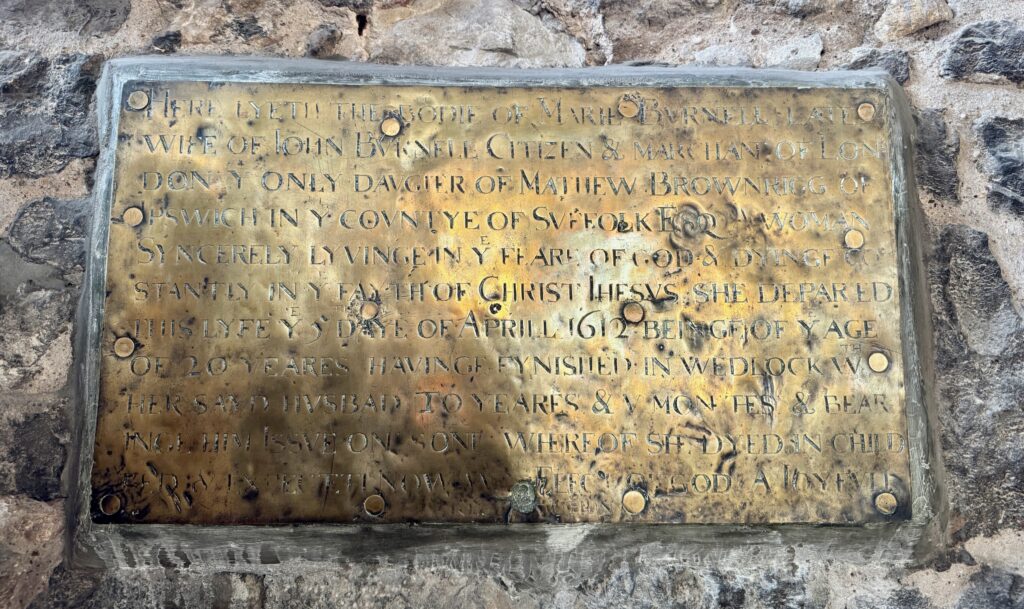
Here lyeth the bodie of Marie Bvrnell late wife of Iohn Bvrnell Citizen & marchant of Lon don ye only davghter of Mathew Brownrigg of Ipswich in ye covntye of Svffolk Esq. A woman Syncerely lyvinge in ye feare of god & dyinge con stantly in ye fayth of Christ Ihesvs she departed this lyfe ye 5 daye of Aprill 1612 beinge of yf age of 20 years havinge fynished in wedlock wth her sayd hvsband to yeafes & v moneths & bear ing him Issve one sone whereof she dyed in child bed & expecteth now wth ye Elect of god a Ioyfvll
resvrrection
Poor Marie. So typical of the time, a young woman dying in childbirth.
And now down to the crypt museum. A subject for a future blog …
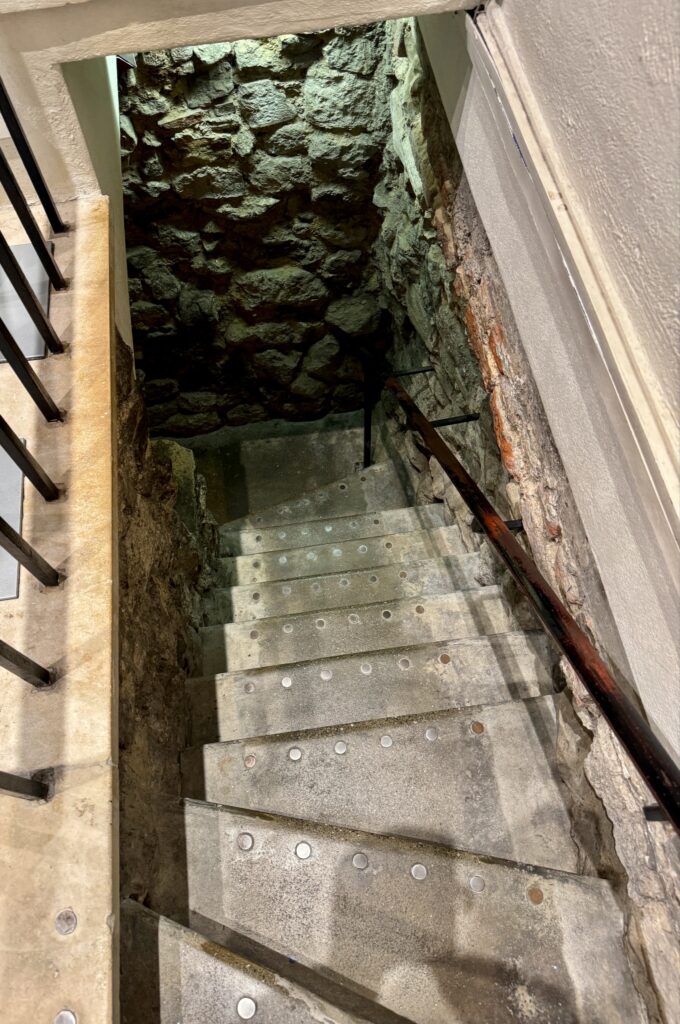
Remember you can follow me on Instagram …

